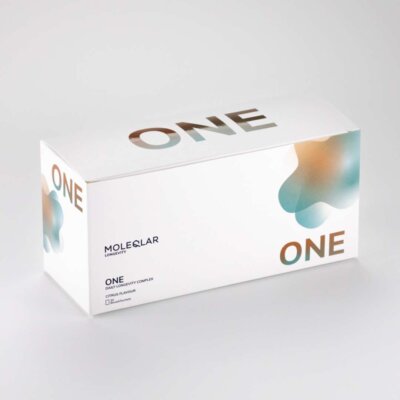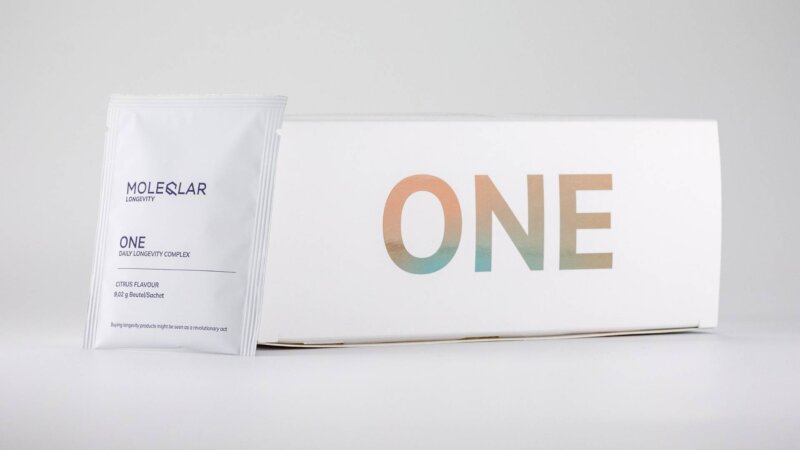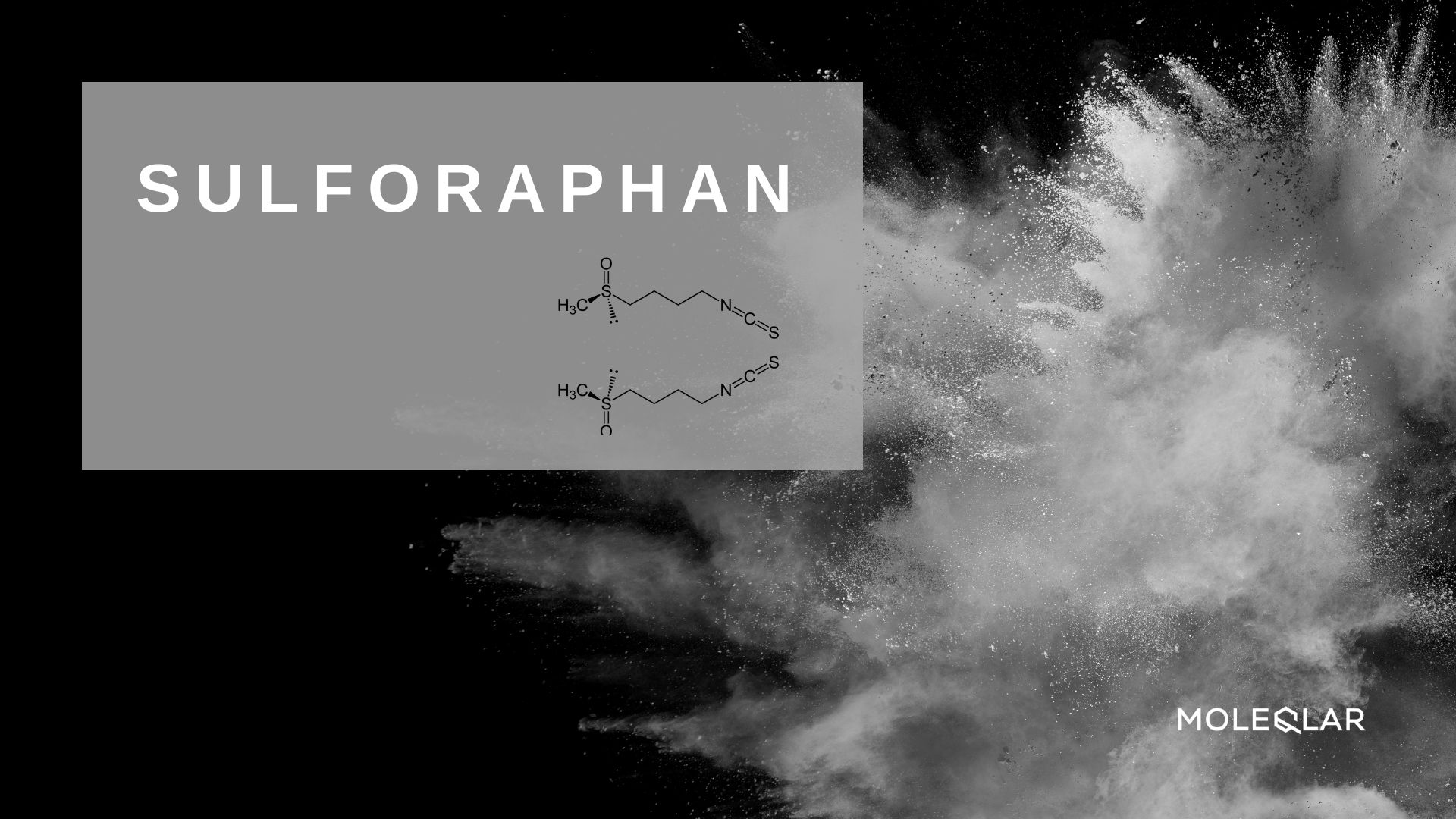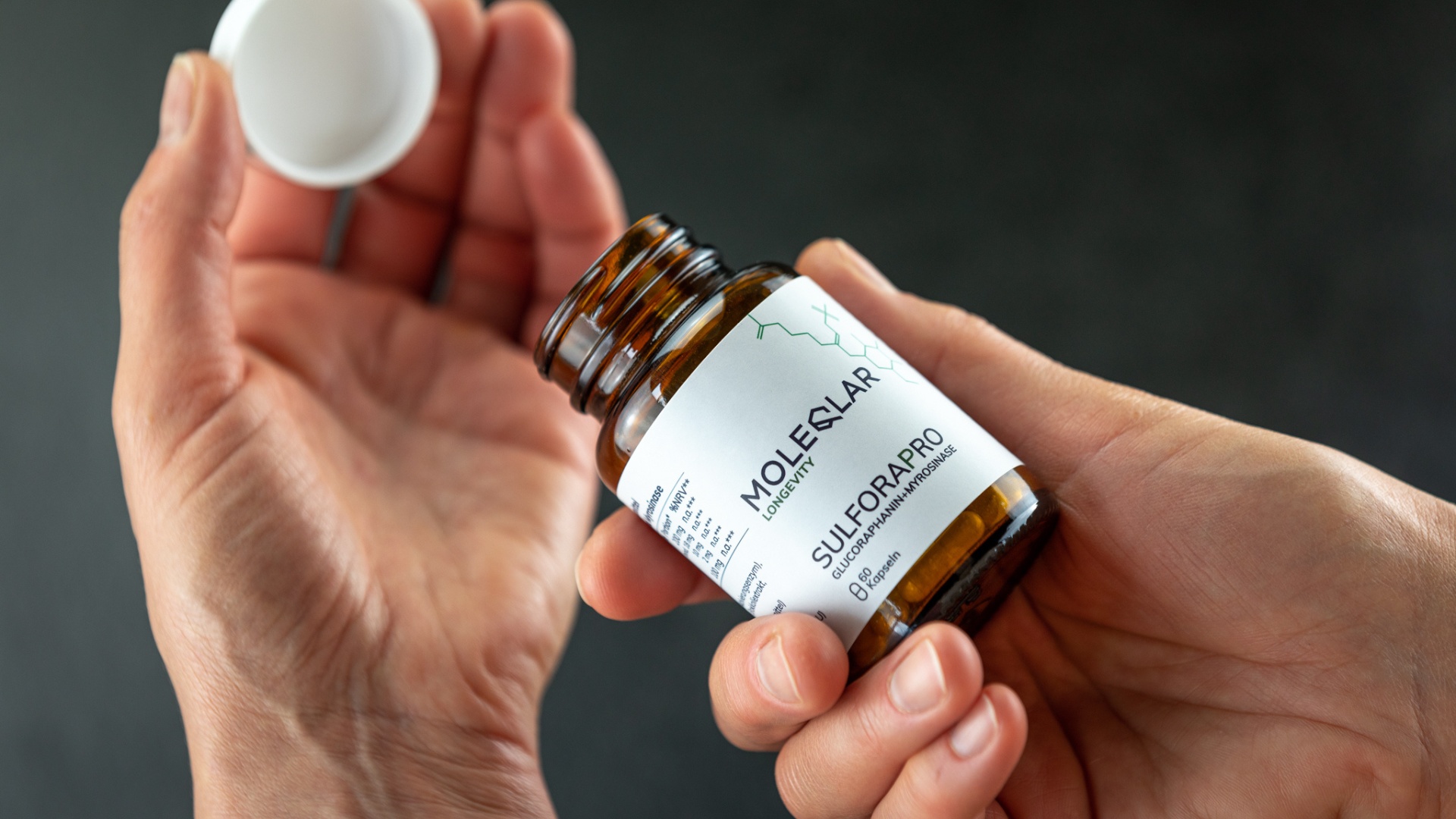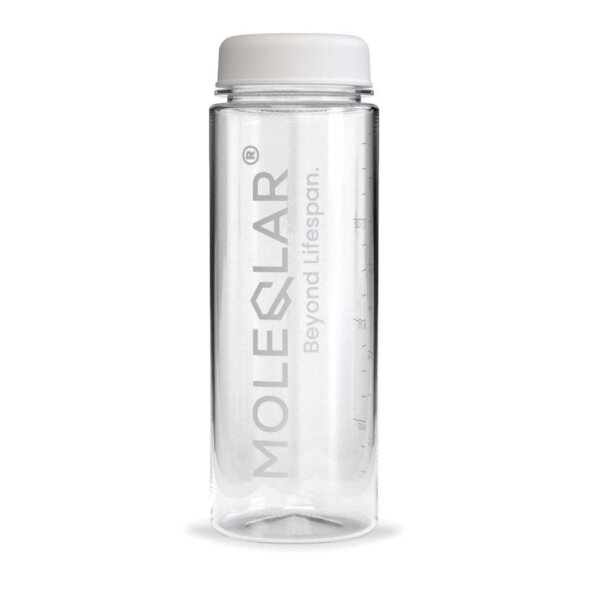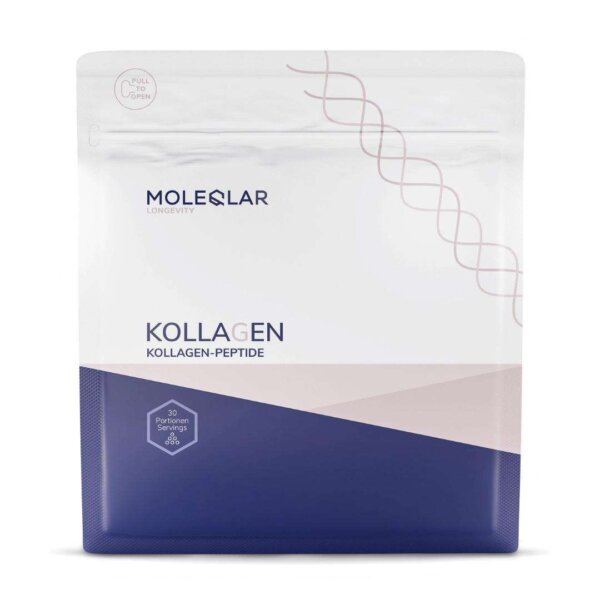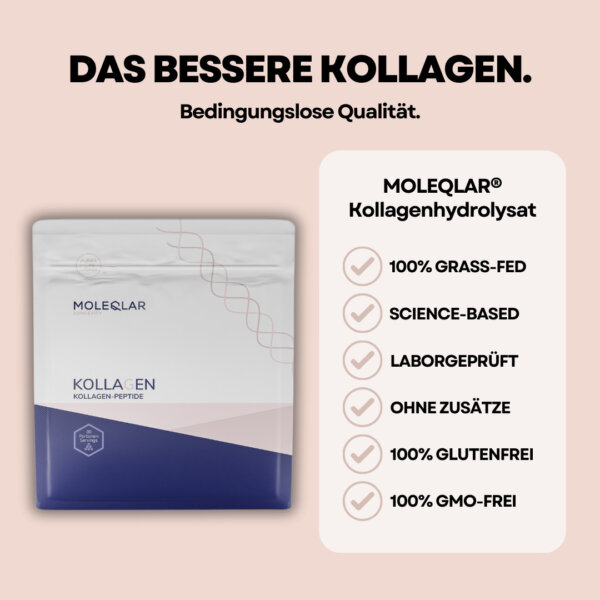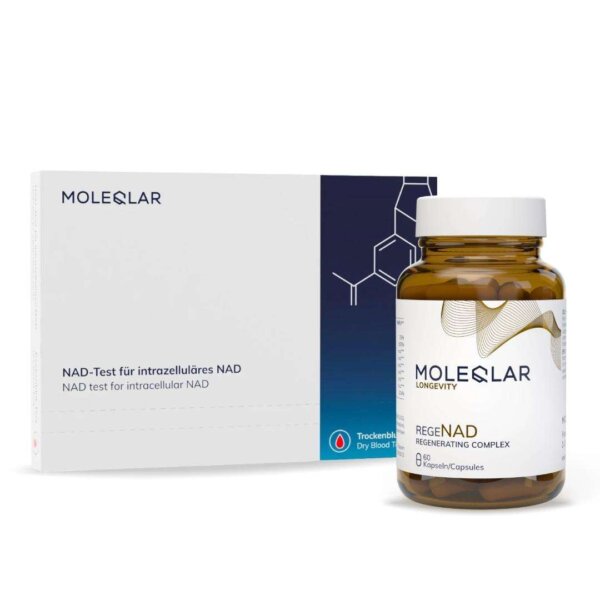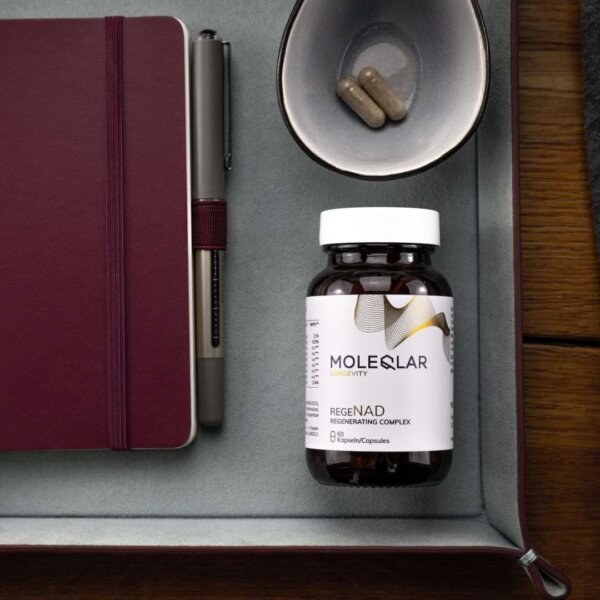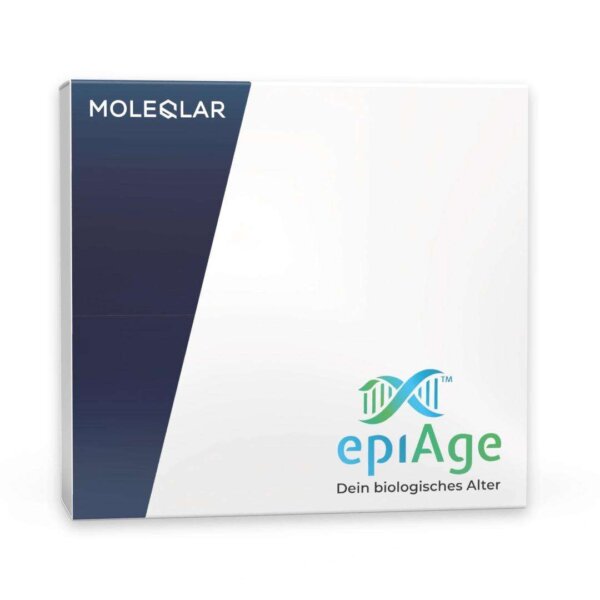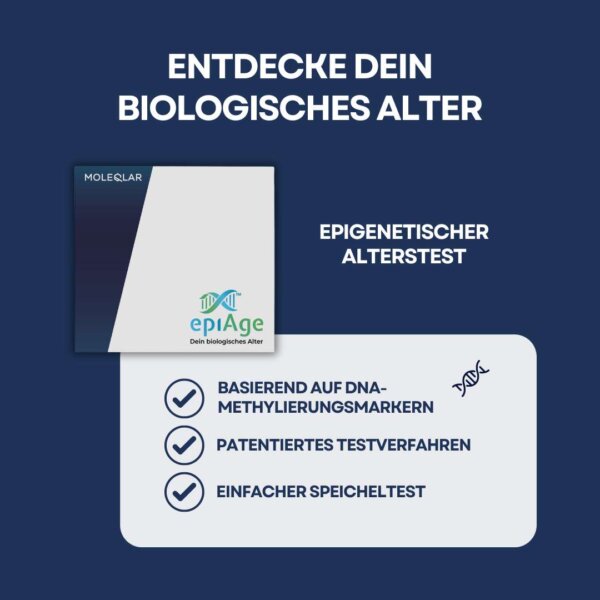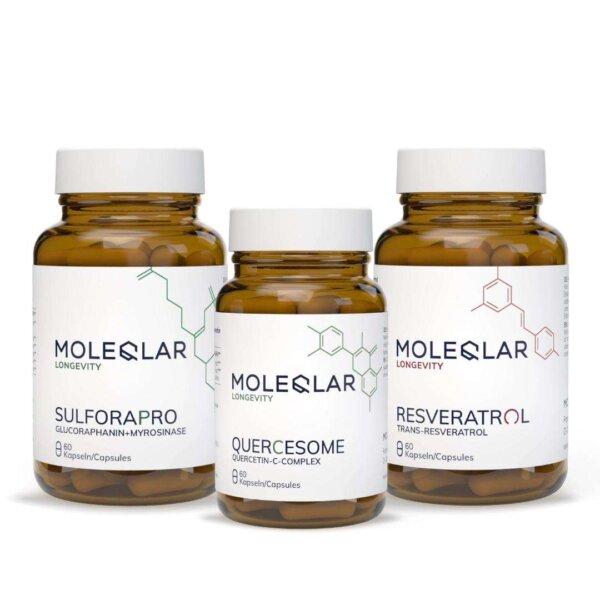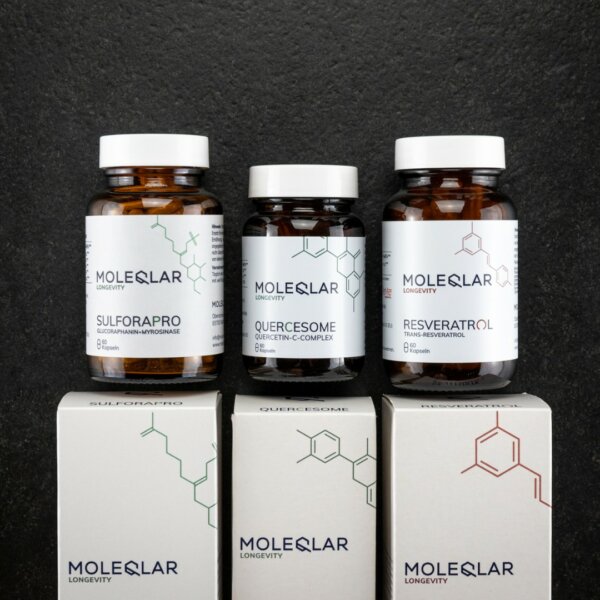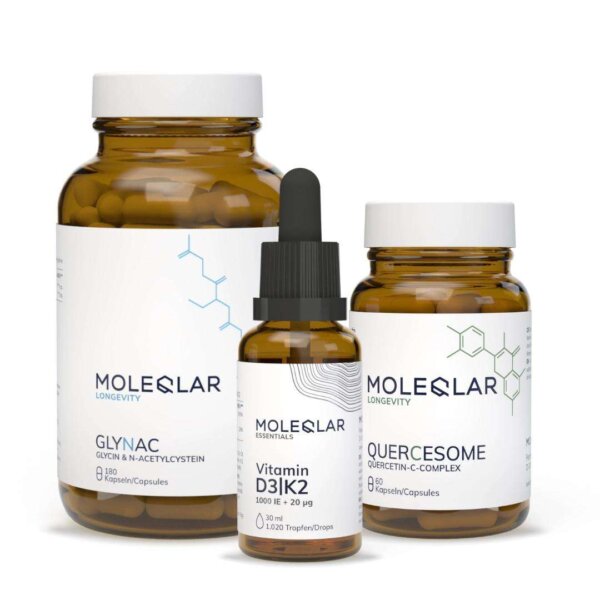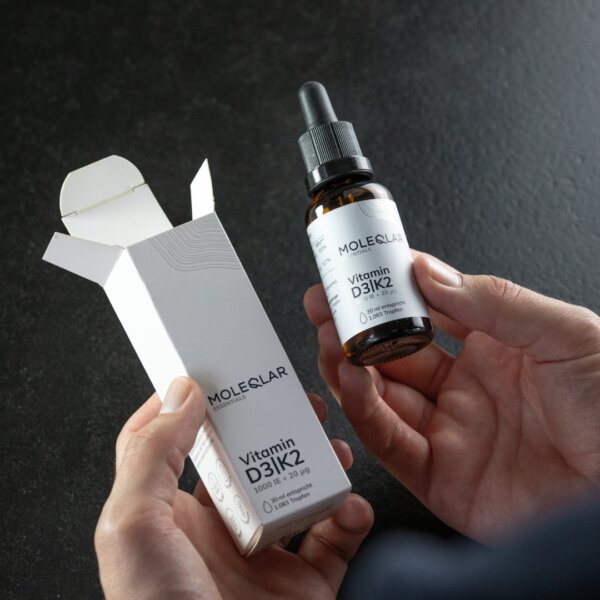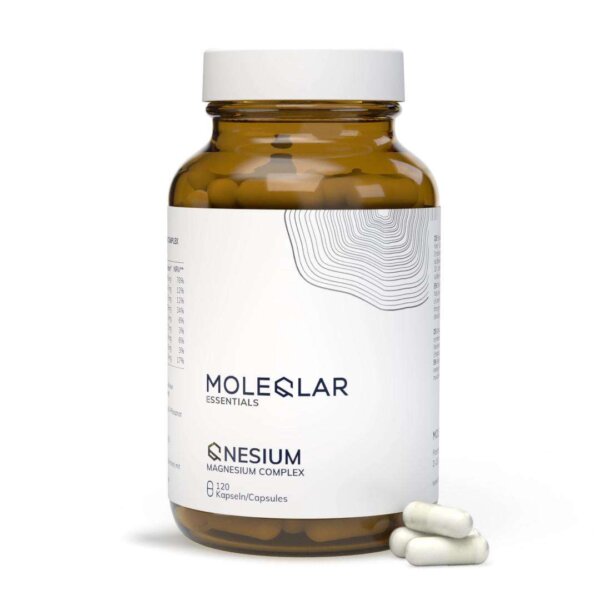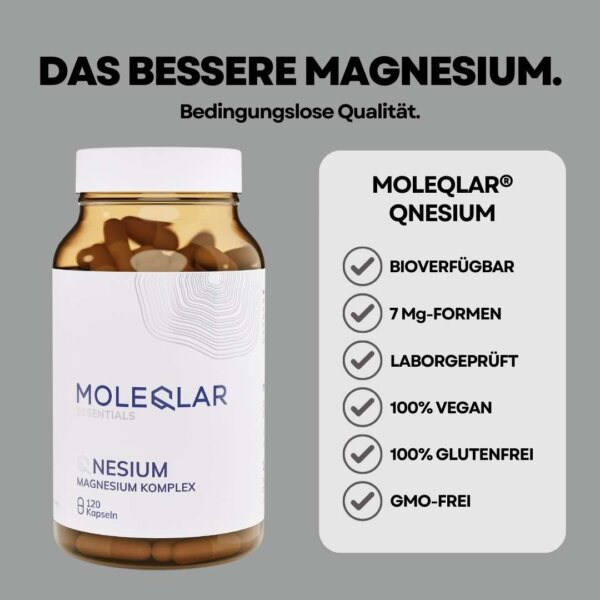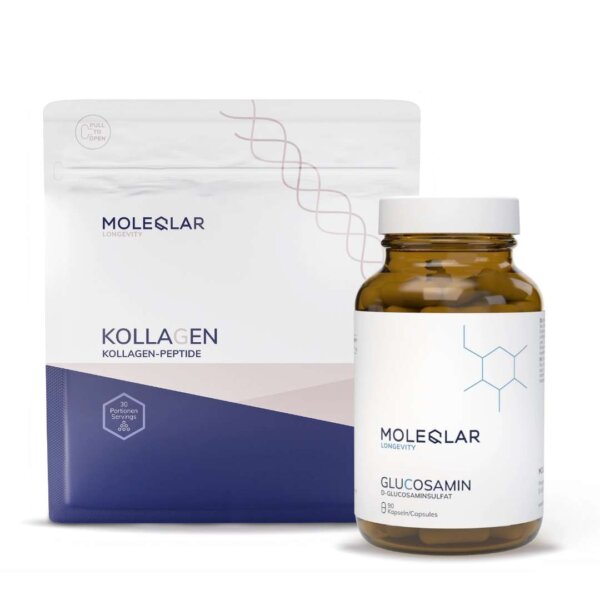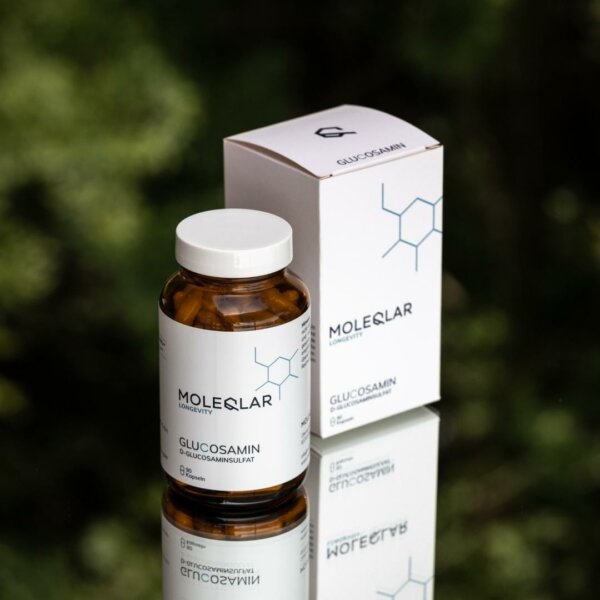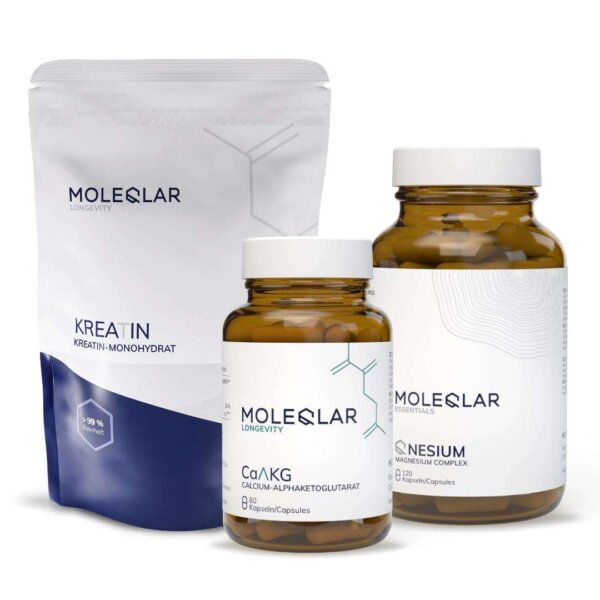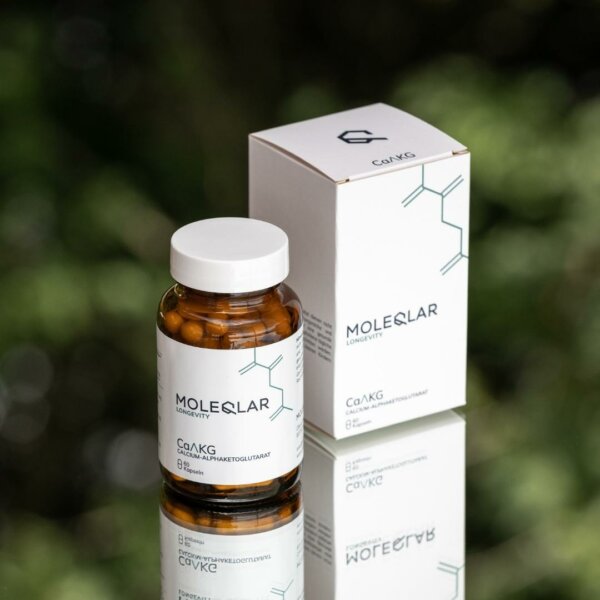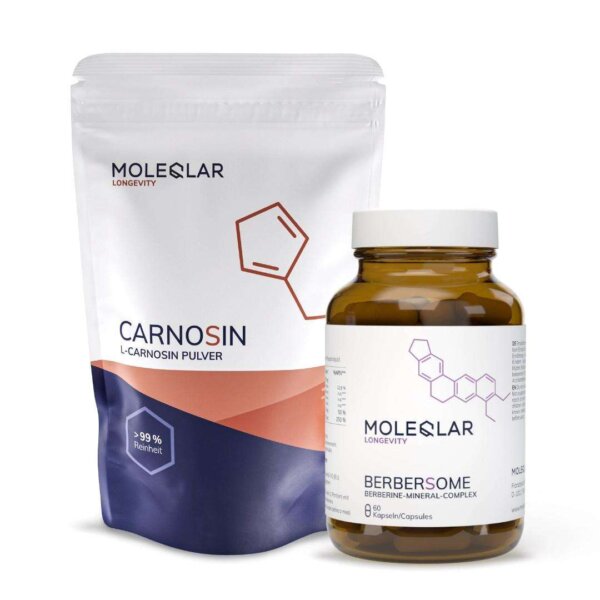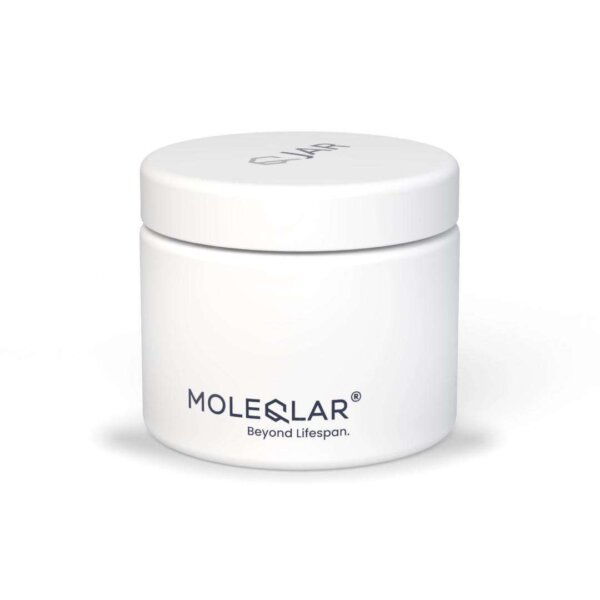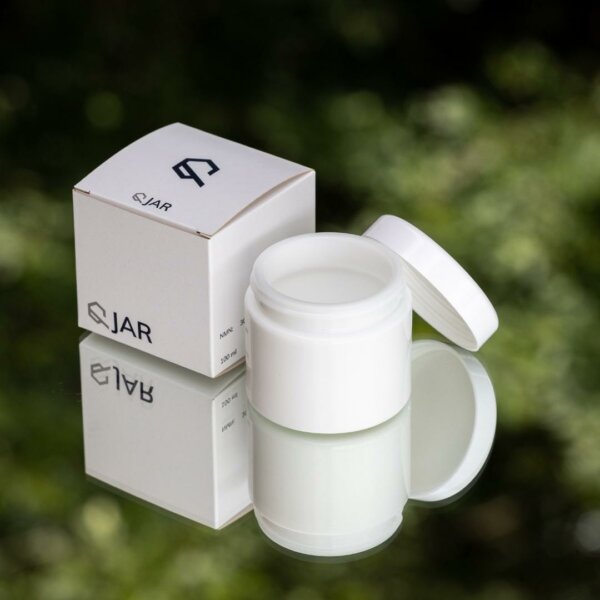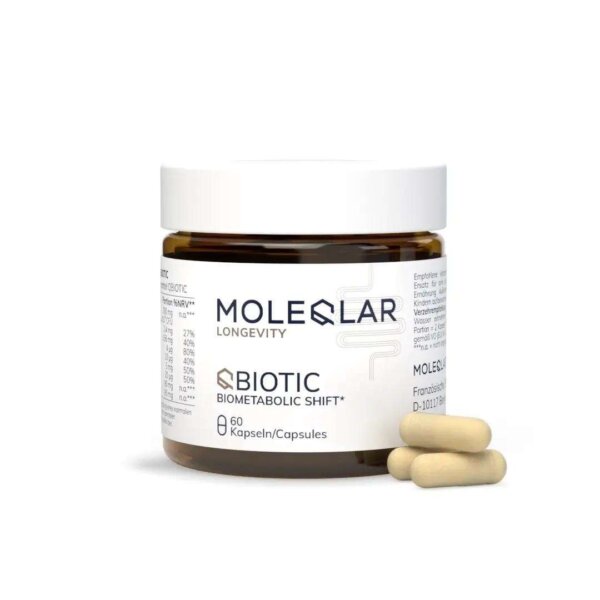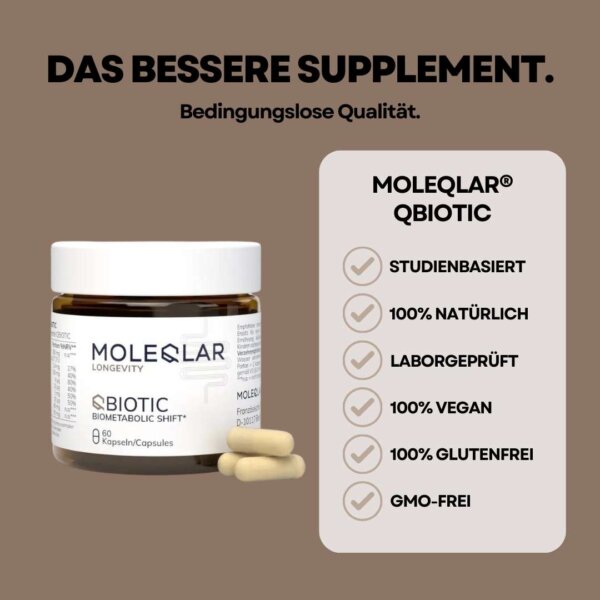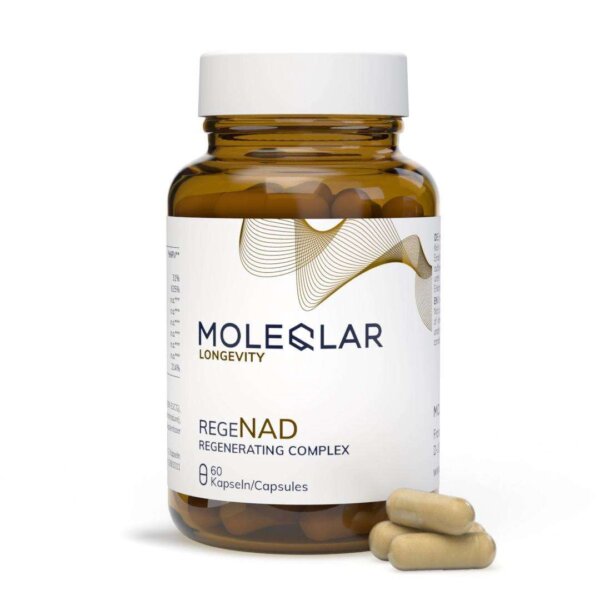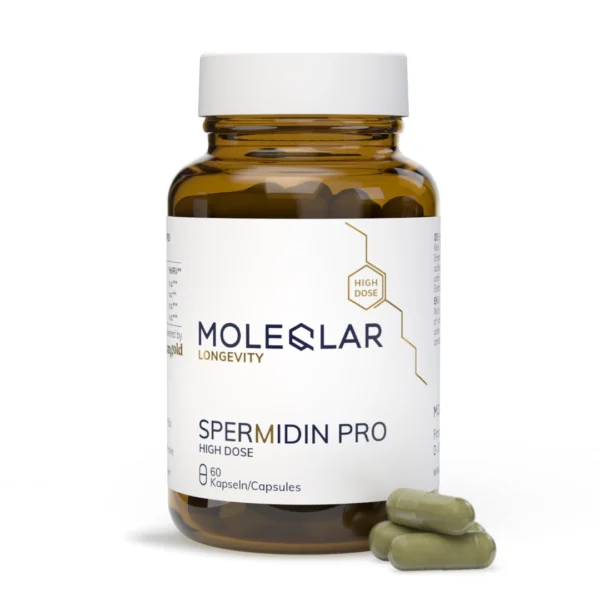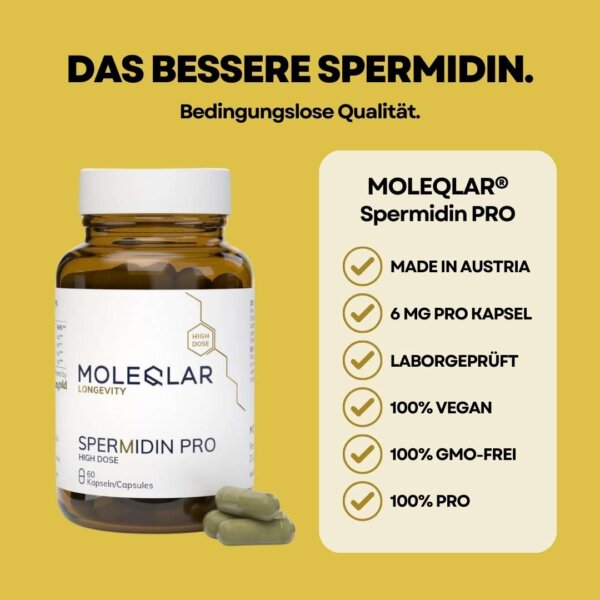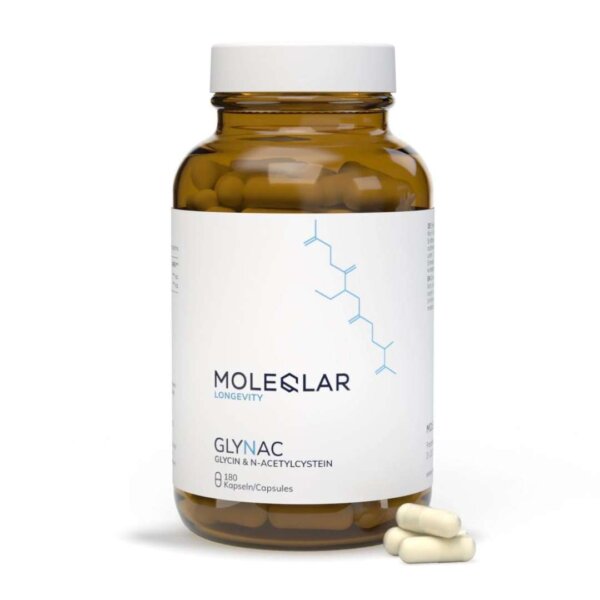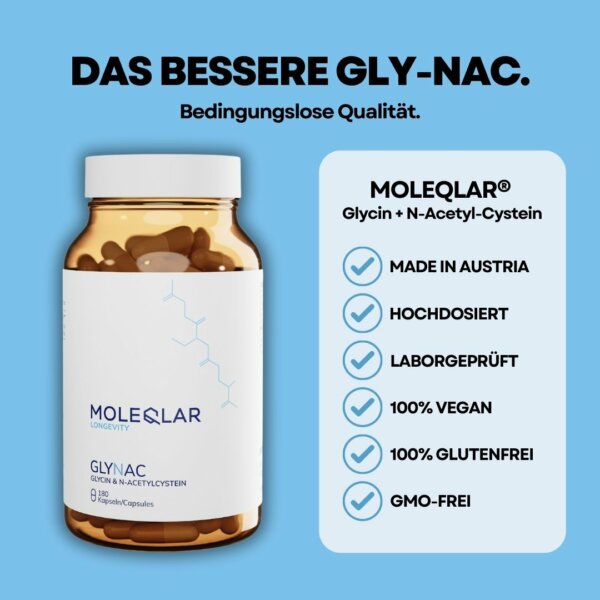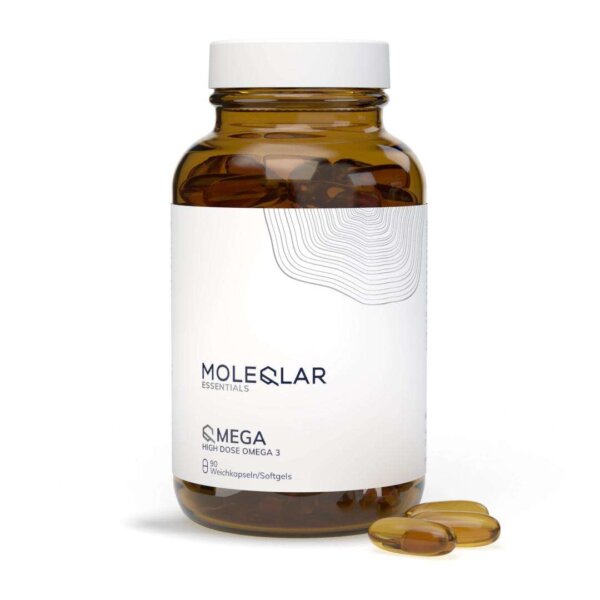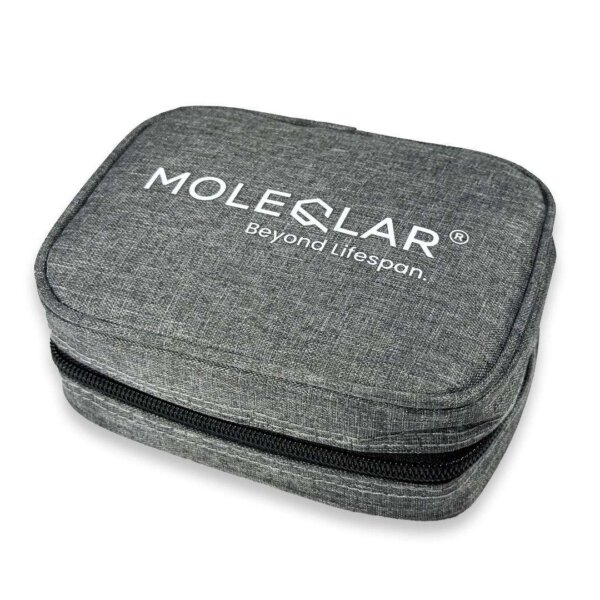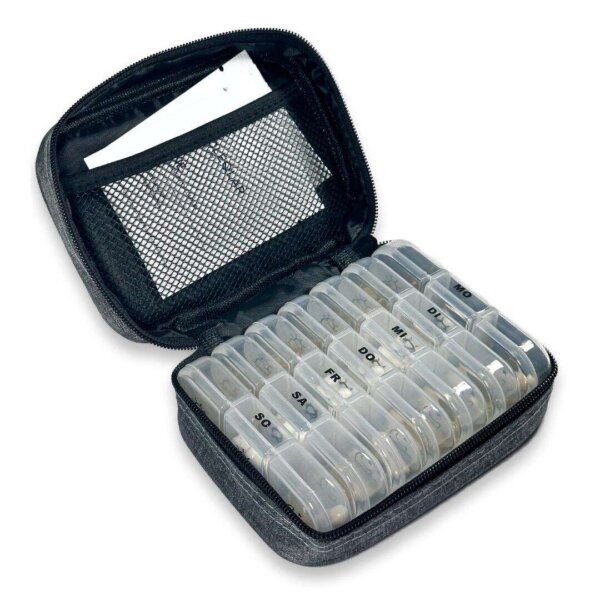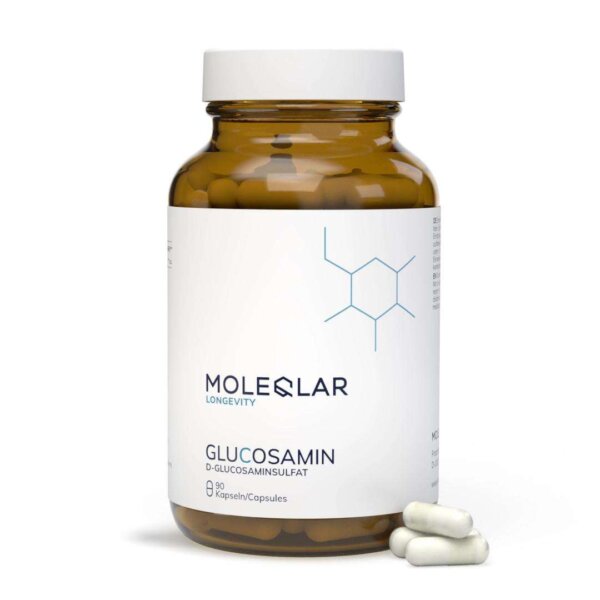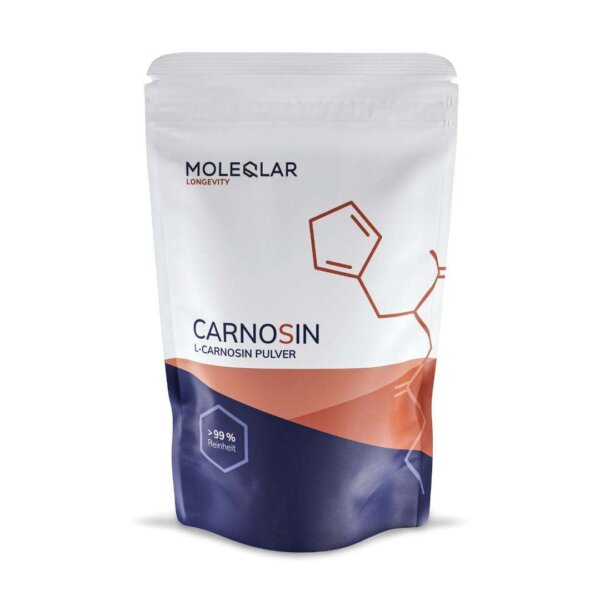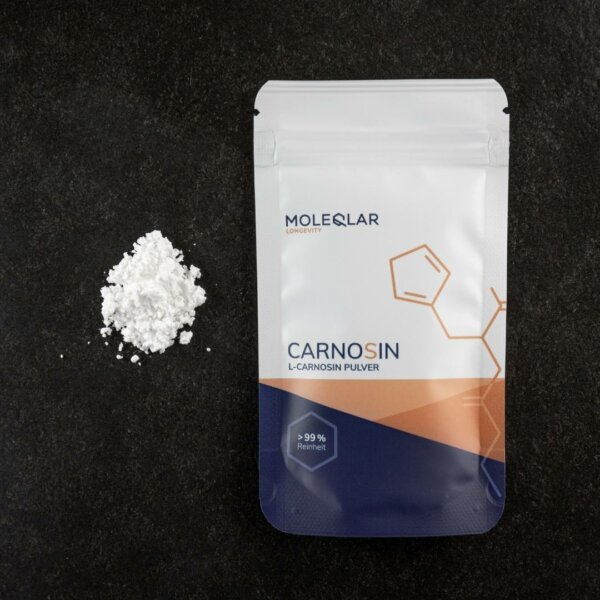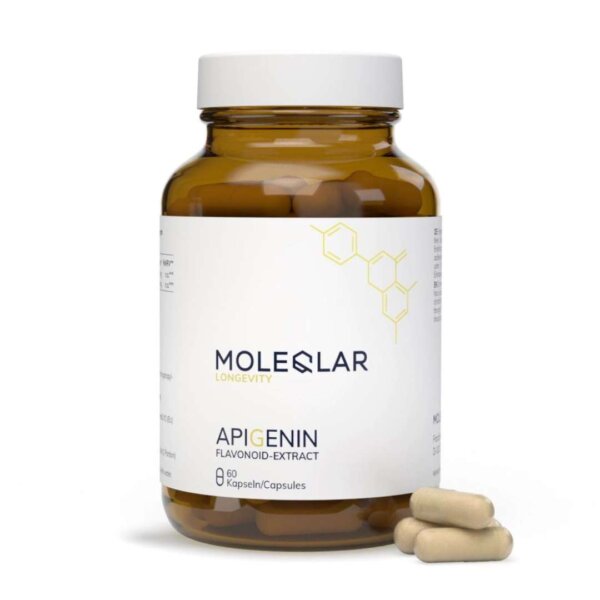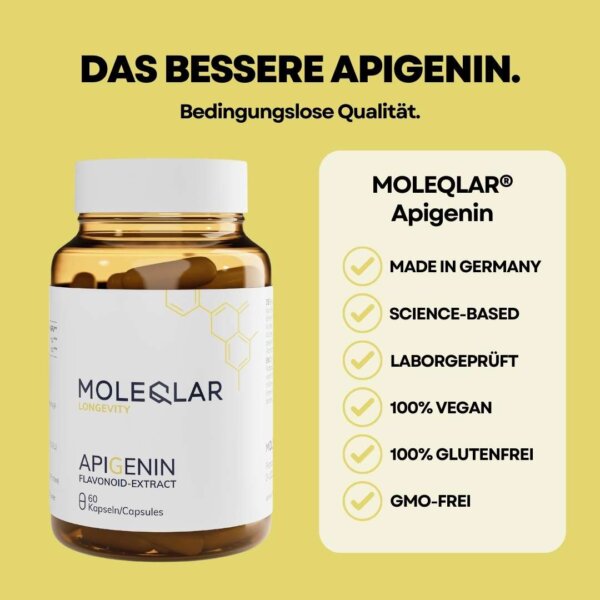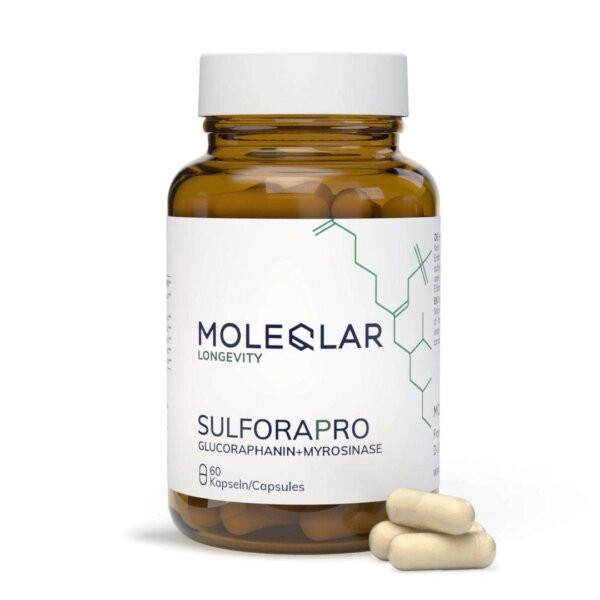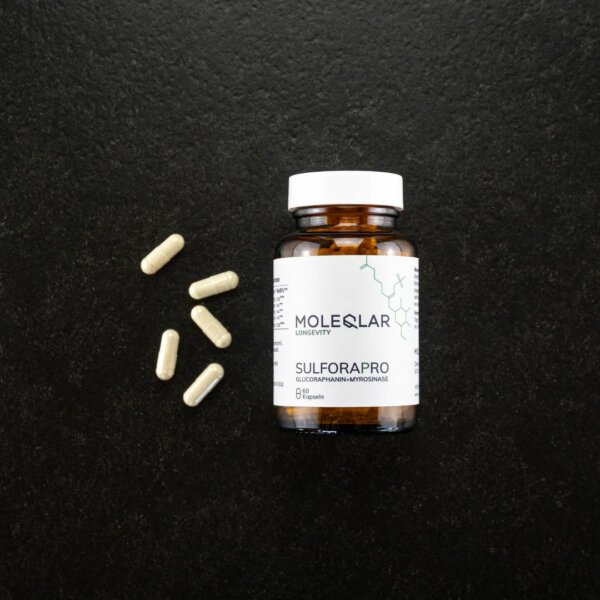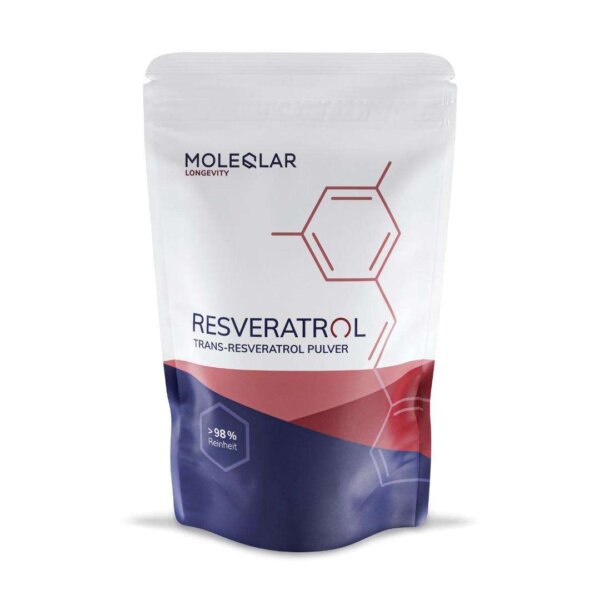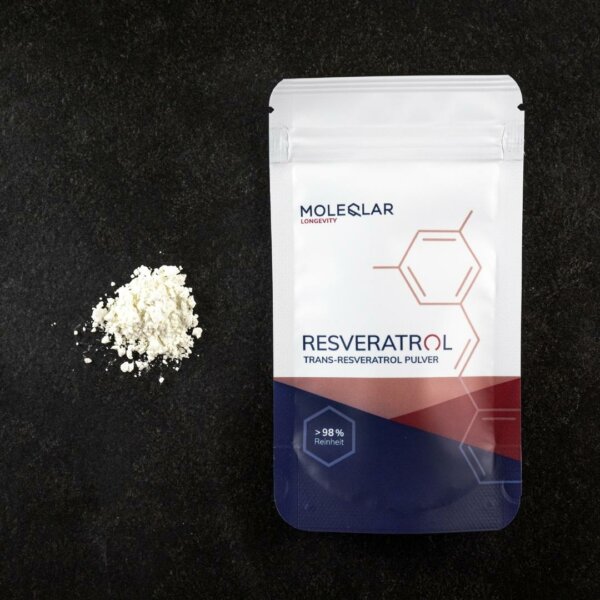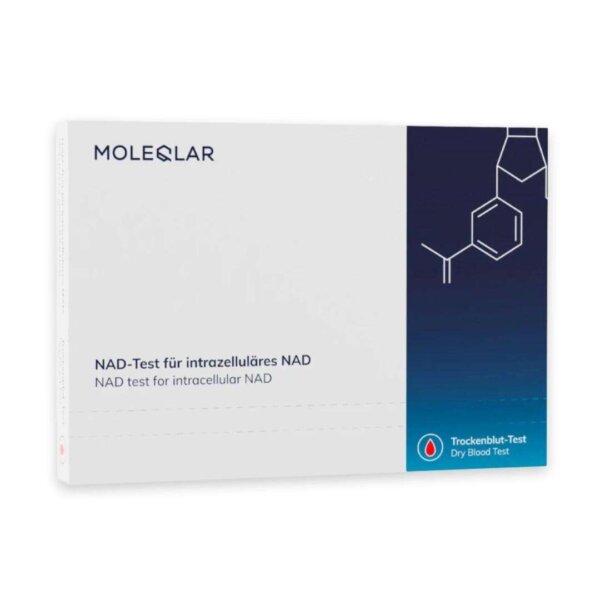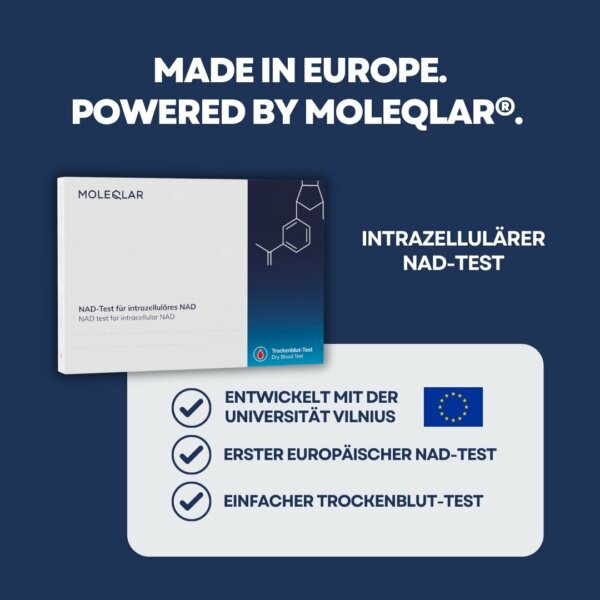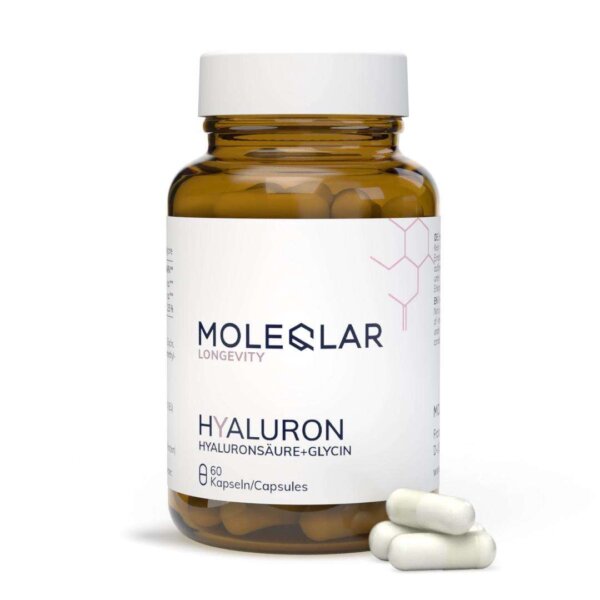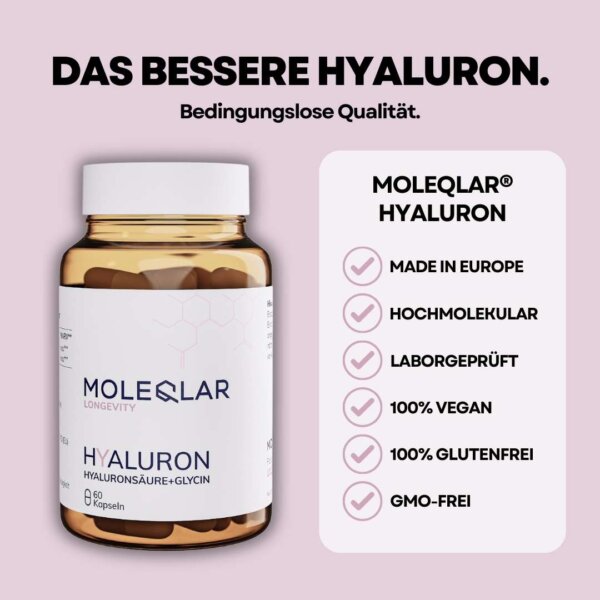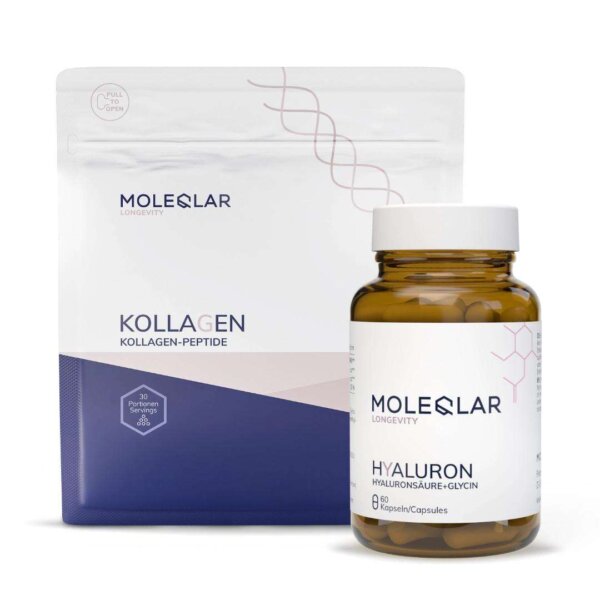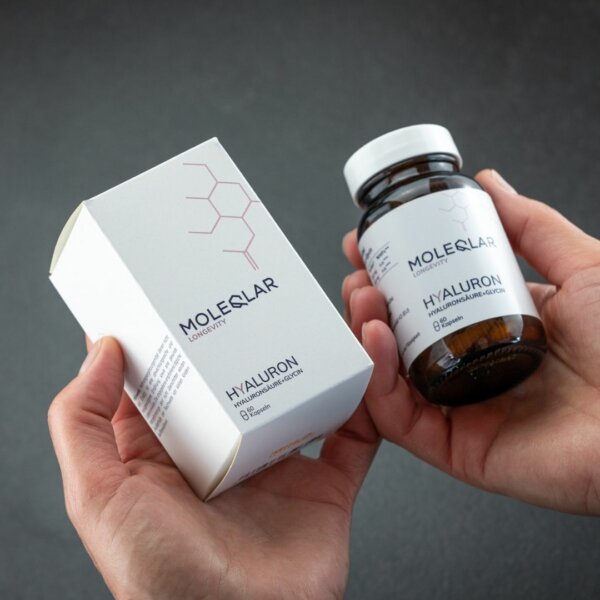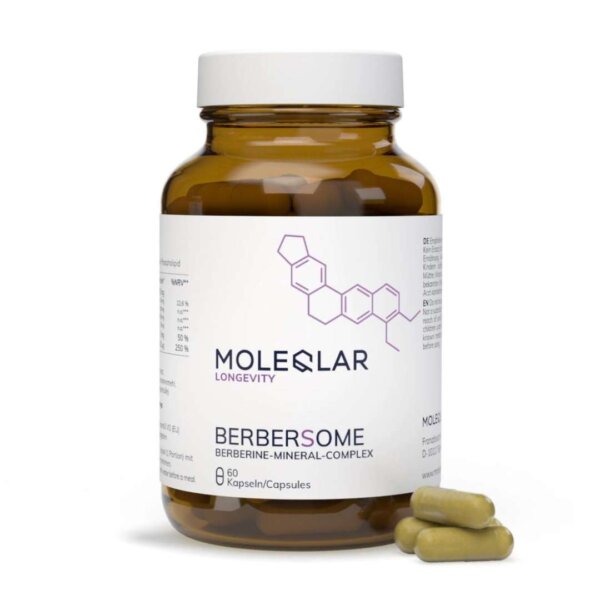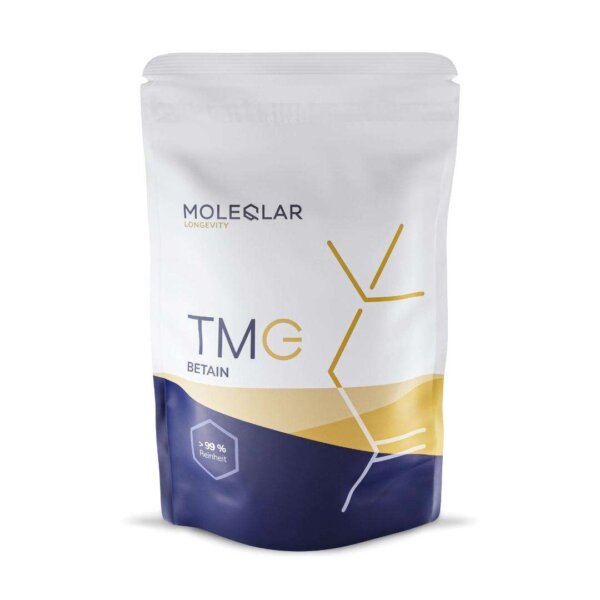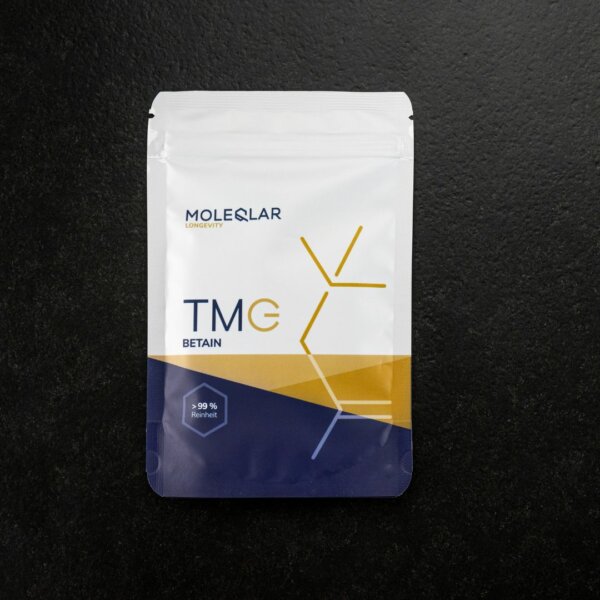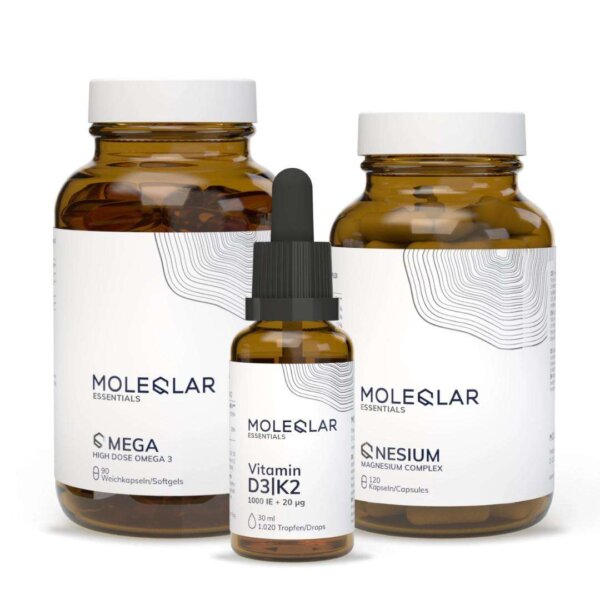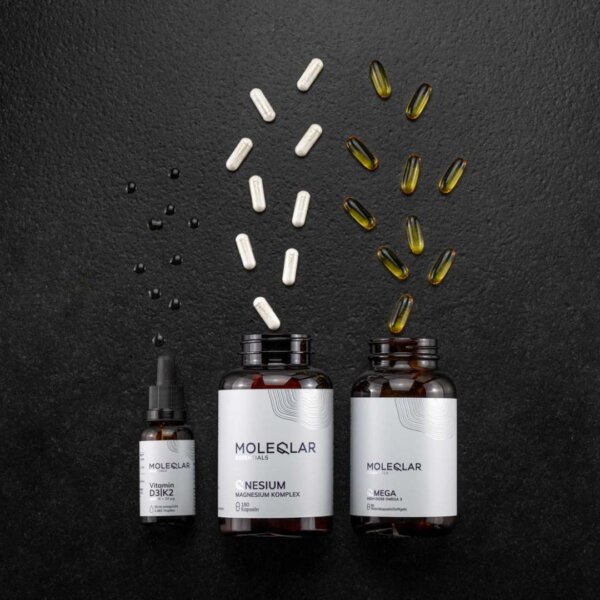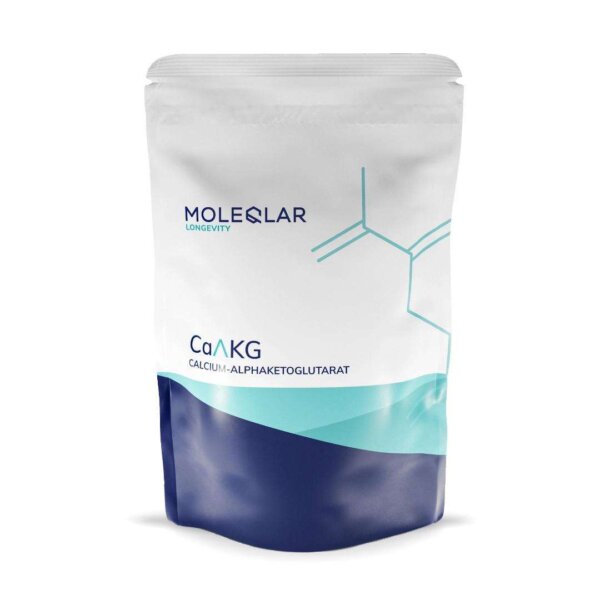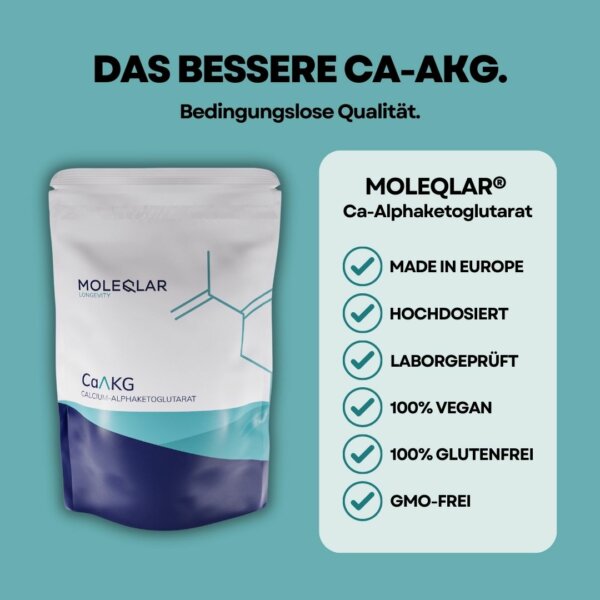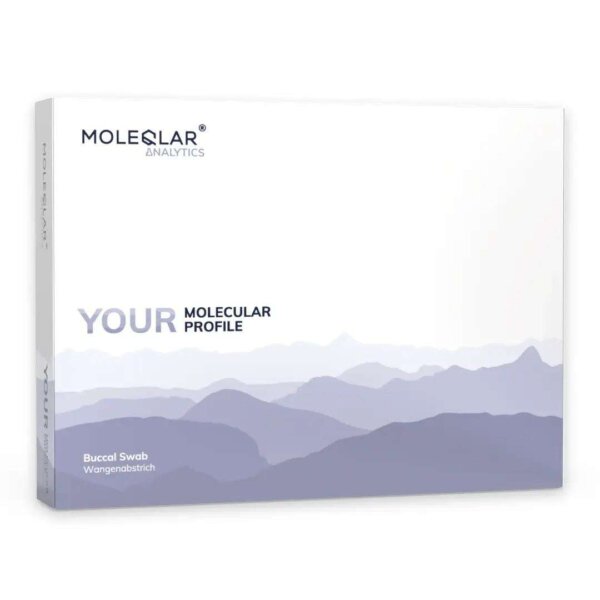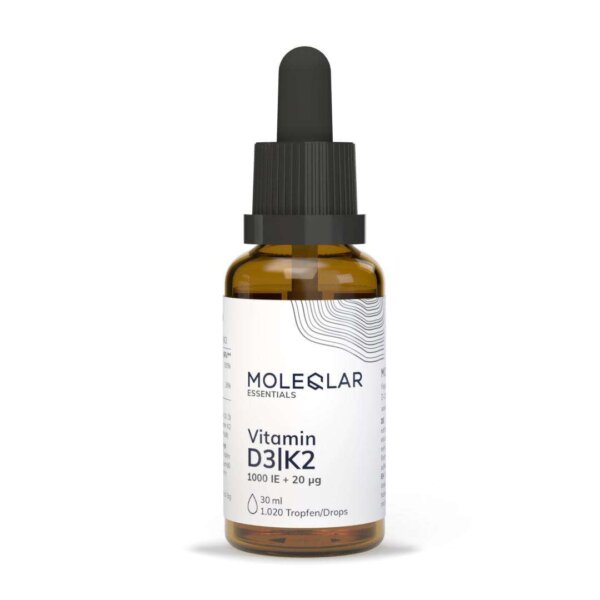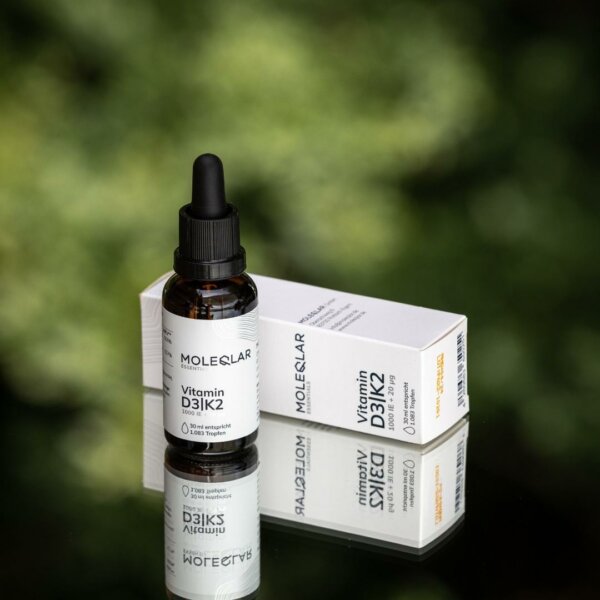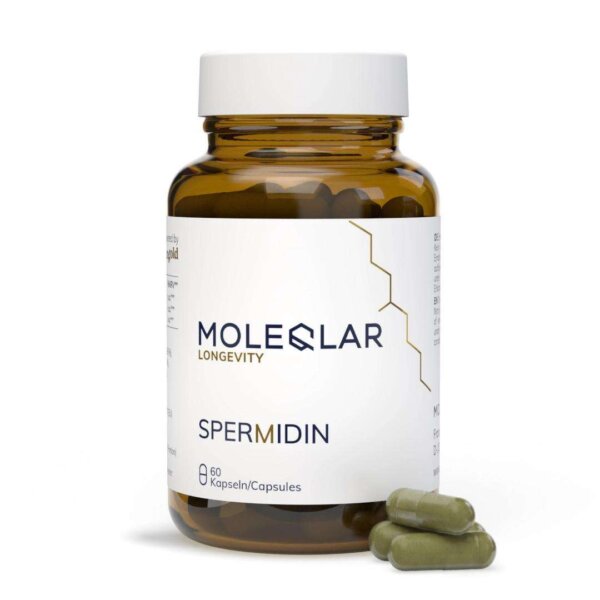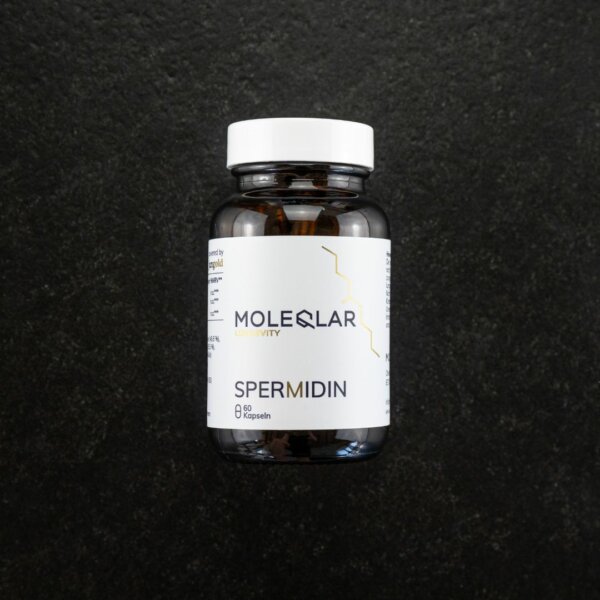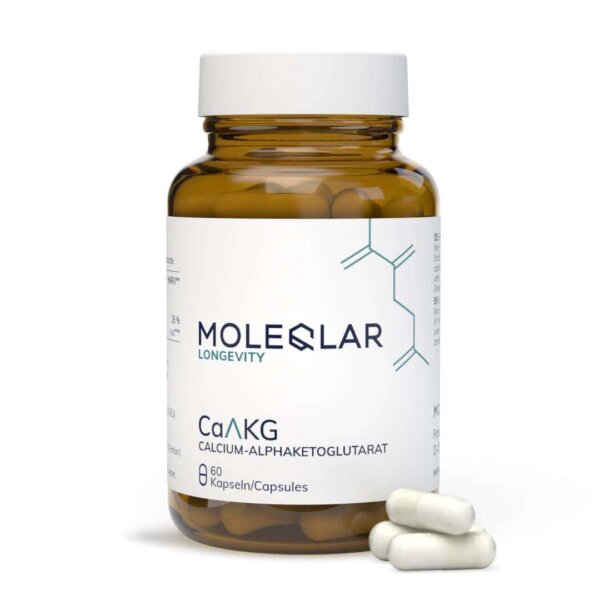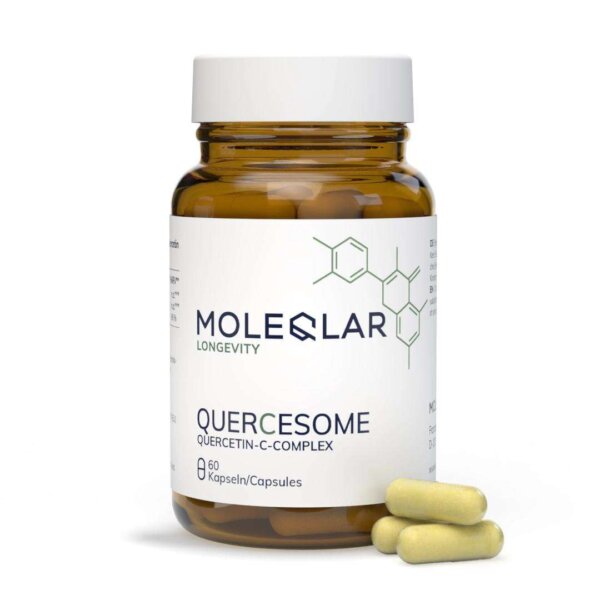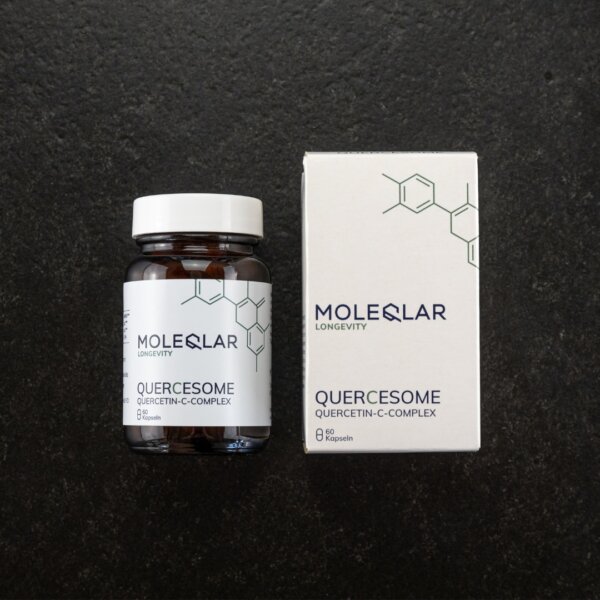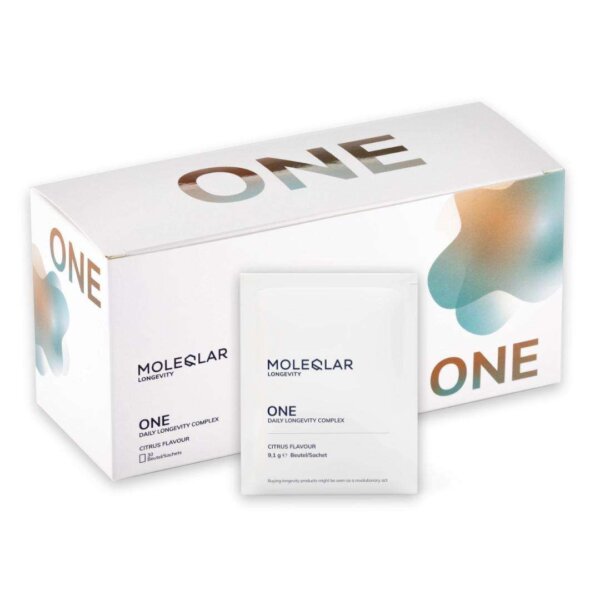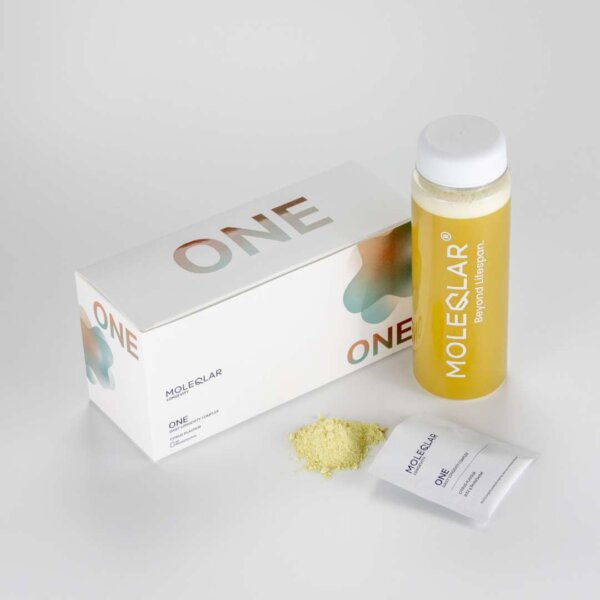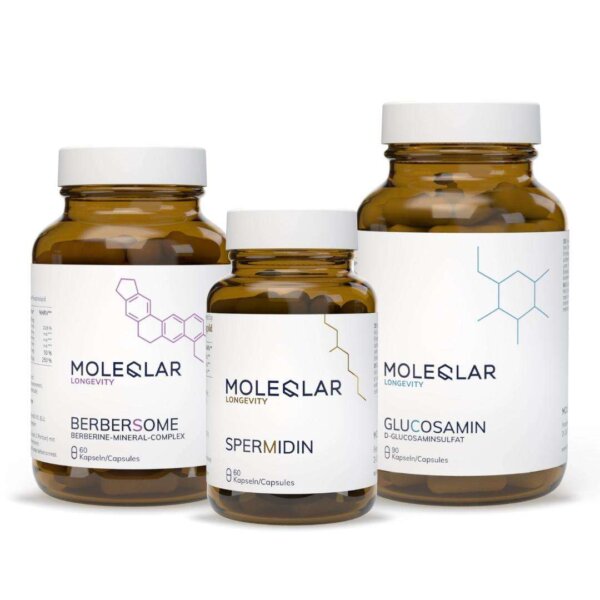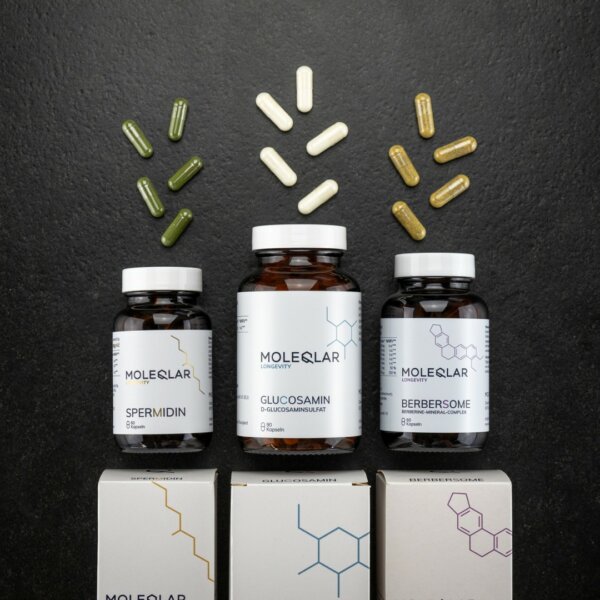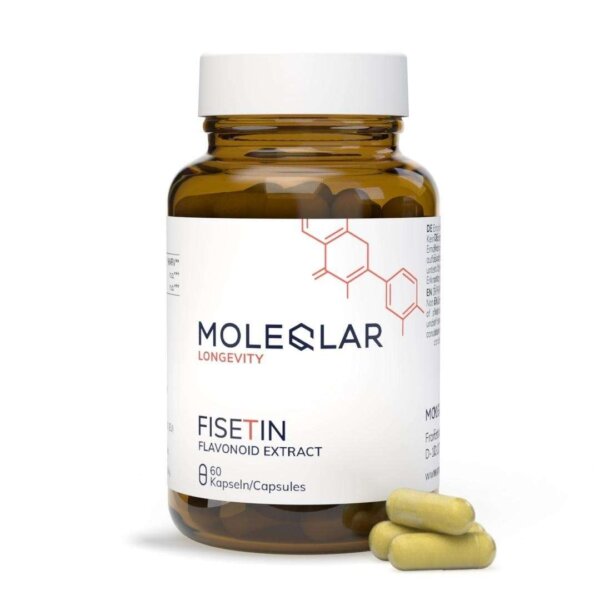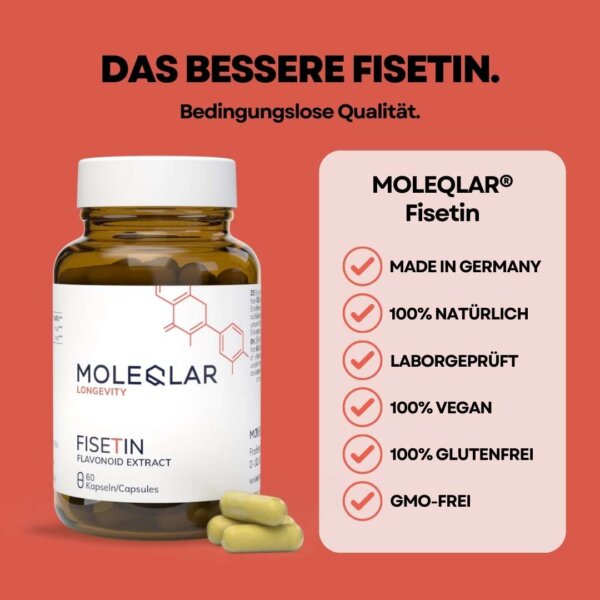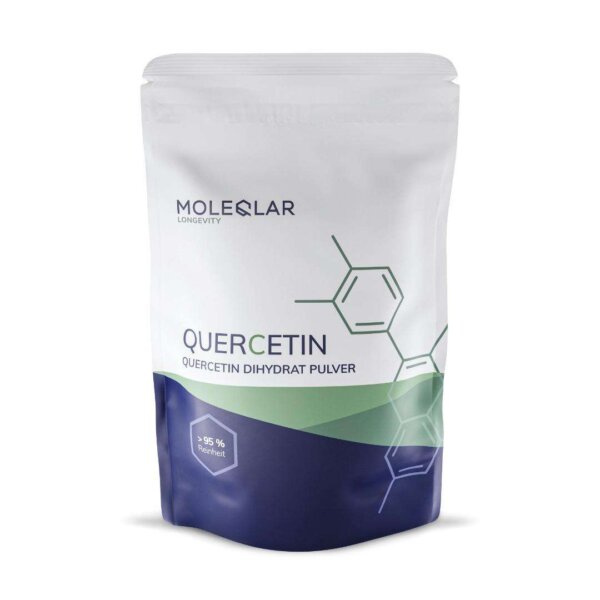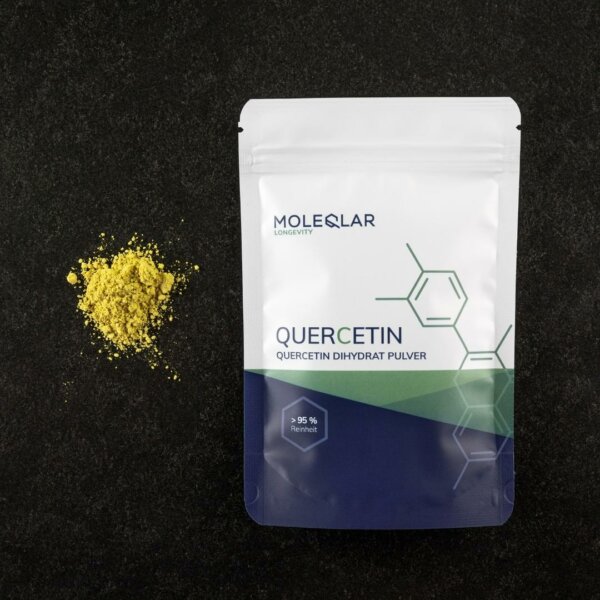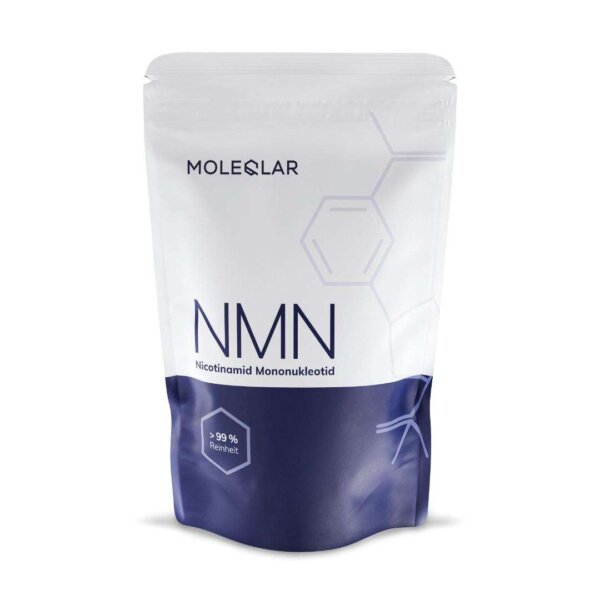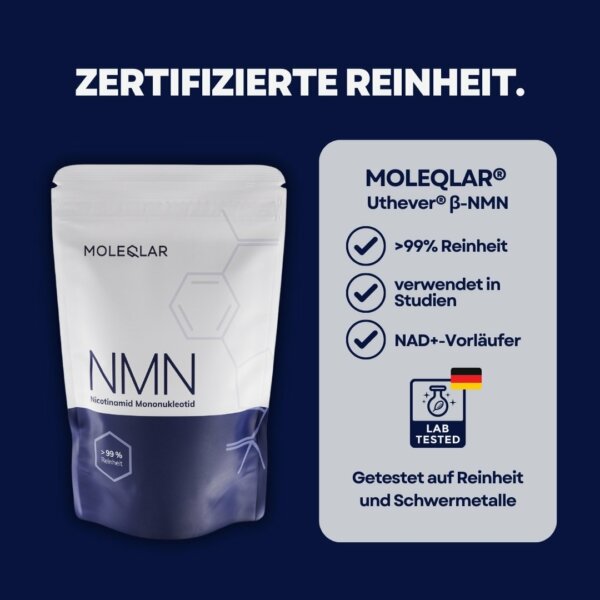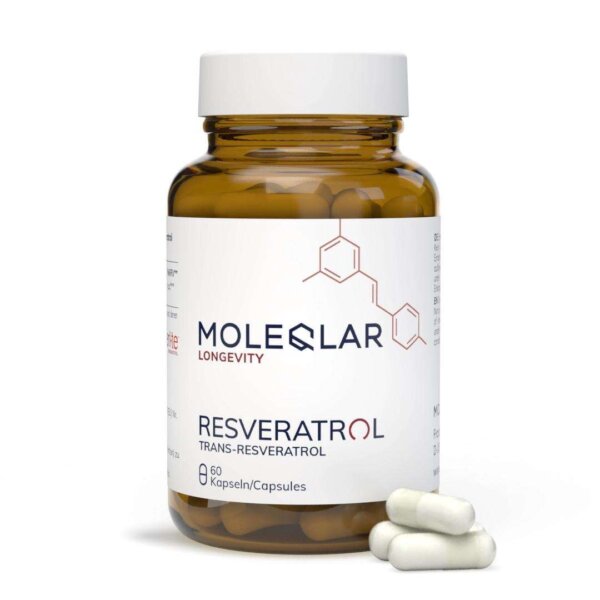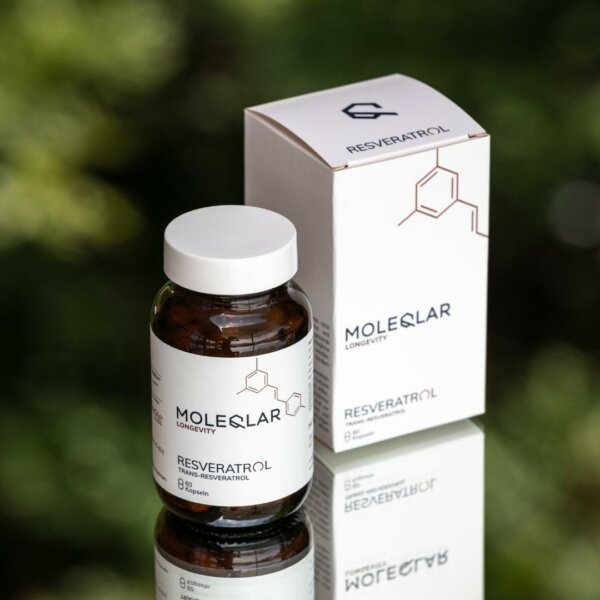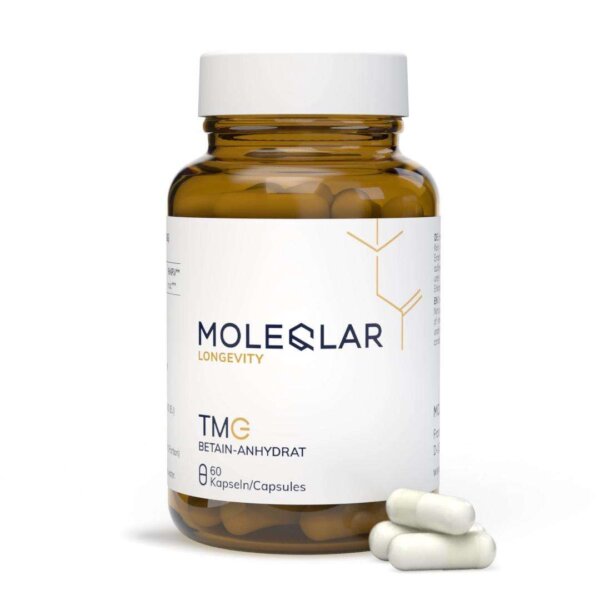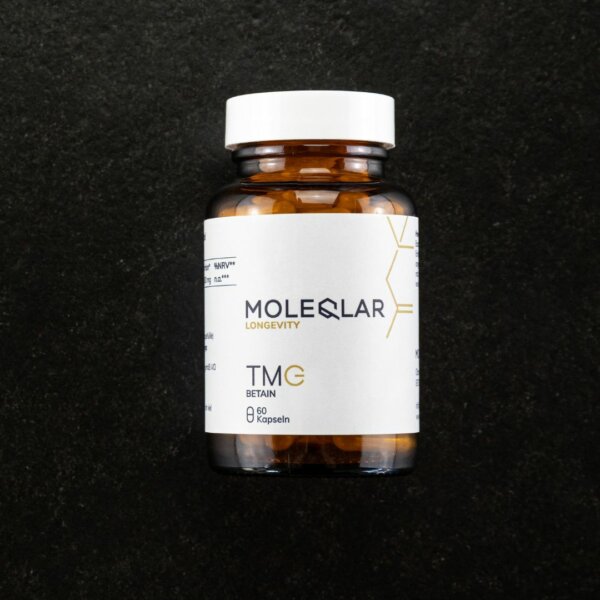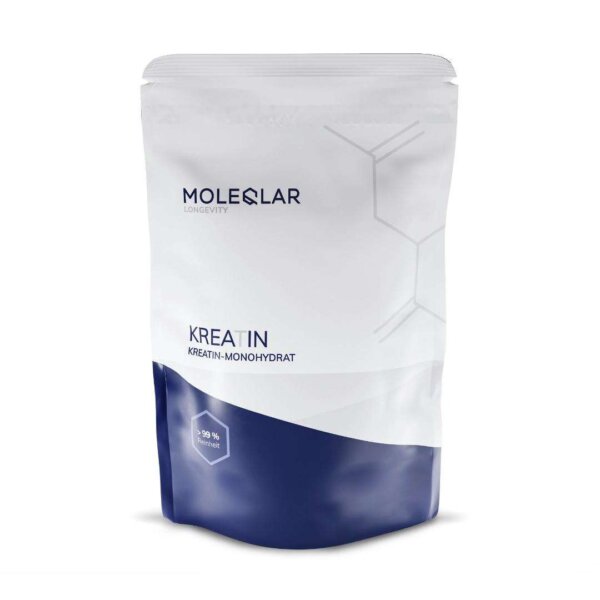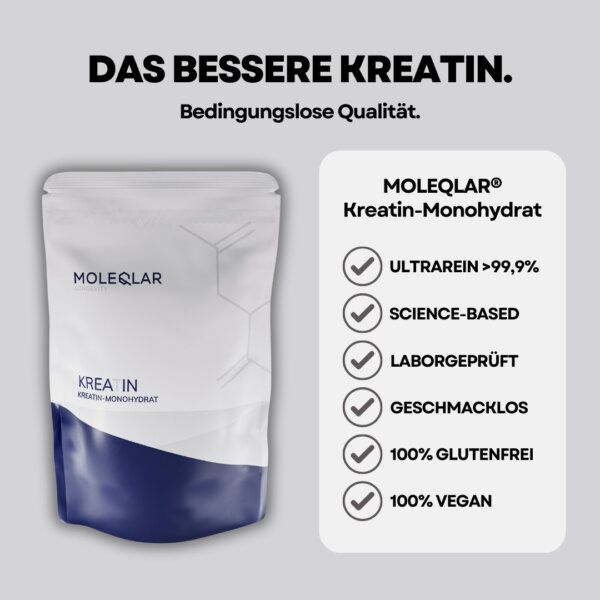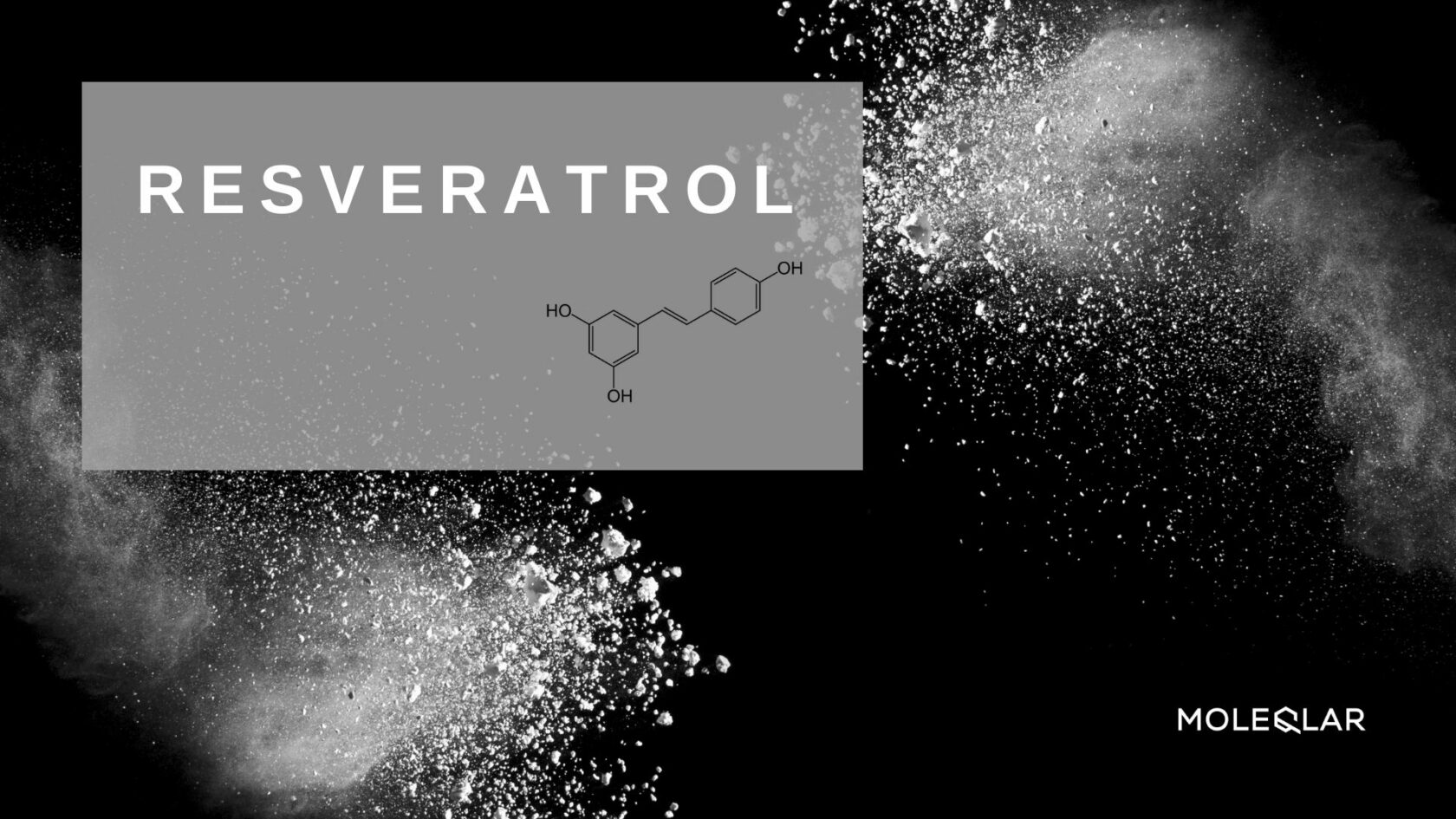In recent years, the importance of a healthy diet to our overall health and longevity has become increasingly important. Scientific research has shown that certain nutrients and compounds in foods can help reduce inflammation and oxidative damage associated with a variety of chronic diseases. One such compound that has received a lot of attention recently is sulforaphane. In this MoleQlar post, we will explore what sulforaphane is, what foods contain the molecule, and what effect the molecule may have on our longevity.
What is sulforaphane?
Sulforaphane is a completely natural compound found in certain cruciferous vegetables such as broccoli, Brussels sprouts and cabbage. It is produced by the combination of two compounds called glucoraphanin and myrosinase, which are present in the cells of these vegetables. When the cells of broccoli or other cruciferous vegetables are damaged - for example, when they are crushed or chewed - a chemical reaction occurs in which glucoraphanin (precursor) and myrosinase (activating enzyme) come together to produce sulforaphane. This process can also be triggered by heating, when the heat breaks the cell walls of the vegetables and releases the two compounds.
Sulforaphane is a powerful antioxidant and a significant anti-inflammatory, which means it can help reduce oxidative stress and inflammation in the body. Both are factors that have been linked to a variety of diseases and ageing processes. But before we take a closer look at the molecule, let's take a look at the aforementioned precursor glucoraphanin and the activator enzyme myrosinase. Why? These two substances form the basis for the formation of sulforaphane and are therefore particularly important.
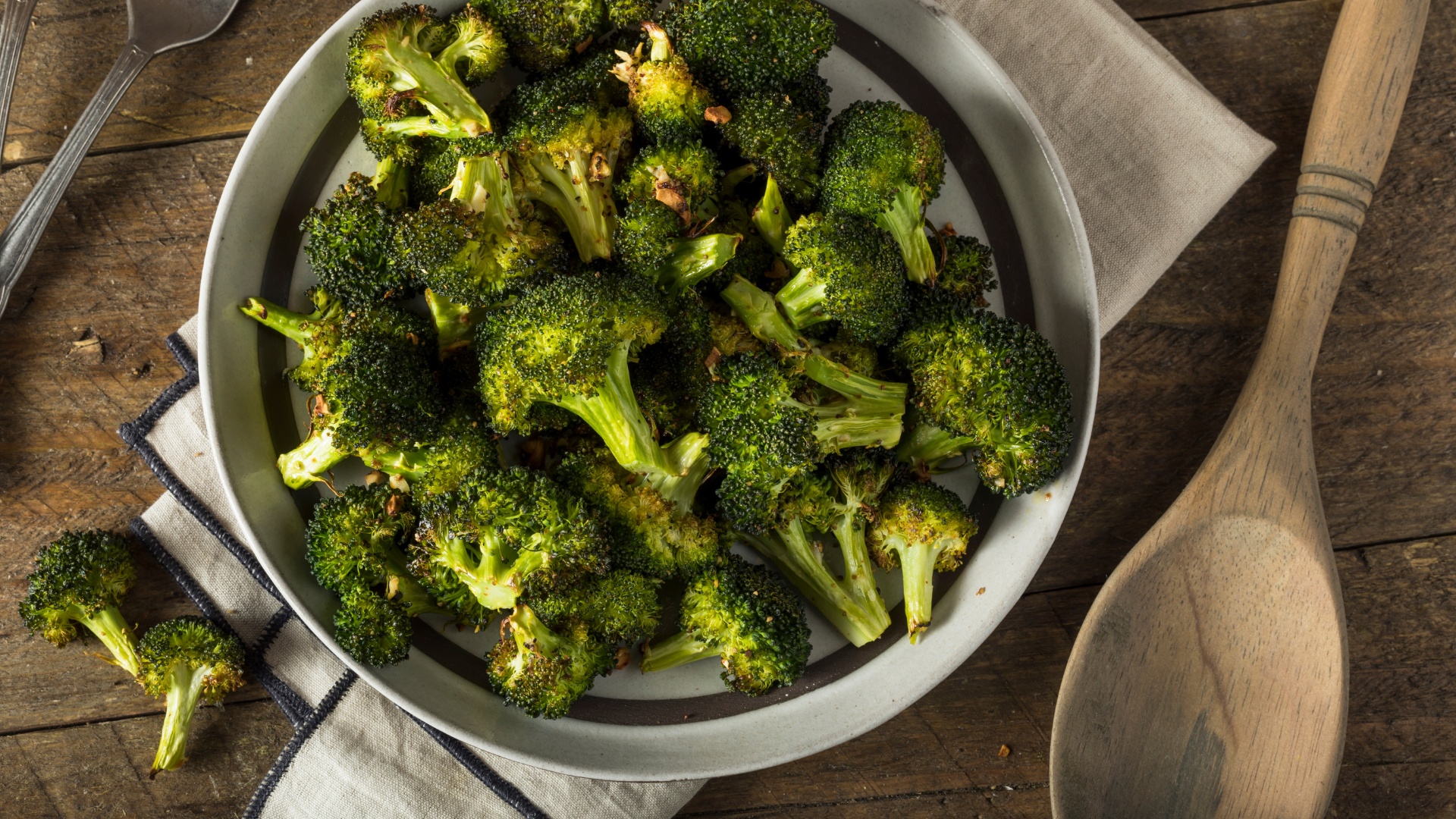
What is glucoraphanin?
Glucoraphanin belongs to the family of glucosinolates, which are secondary plant substances and are attracting increasing attention due to their health-promoting effects. They are also known as mustard oil glycosides. Glucoraphanin has a characteristic molecular structure consisting of a glucose molecule and a sulphur-containing molecule known as a sulphoxy group. When glucoraphanin is activated by enzymes, it converts to sulforaphane by splitting off the sulfoxy group. Glucoraphanin is therefore used in innovative food supplements in combination with myrosinase (activator enzyme). The conversion of glucoraphanin into sulforaphane mainly takes place in the gastrointestinal tract. We explain what exactly the activator enzyme myrosinase is in the next section.
What is myrosinase?
Myrosinase is an enzyme responsible for the conversion of glucoraphanin into sulforaphane. Without myrosinase, glucoraphanin would not be able to be converted into sulforaphane. During cooking of cruciferous vegetables, the myrosinase enzyme may be destroyed due to heat or pH changes, reducing the conversion of glucoraphanin to the target molecule. For this reason, it is recommended that cruciferous vegetables be cooked gently or consumed raw to ensure that sufficient myrosinase is present to ensure the conversion of glucoraphanin to sulforaphane. Alternatively, a combination of glucoraphanin and myrosinase can be taken as a dietary supplement.
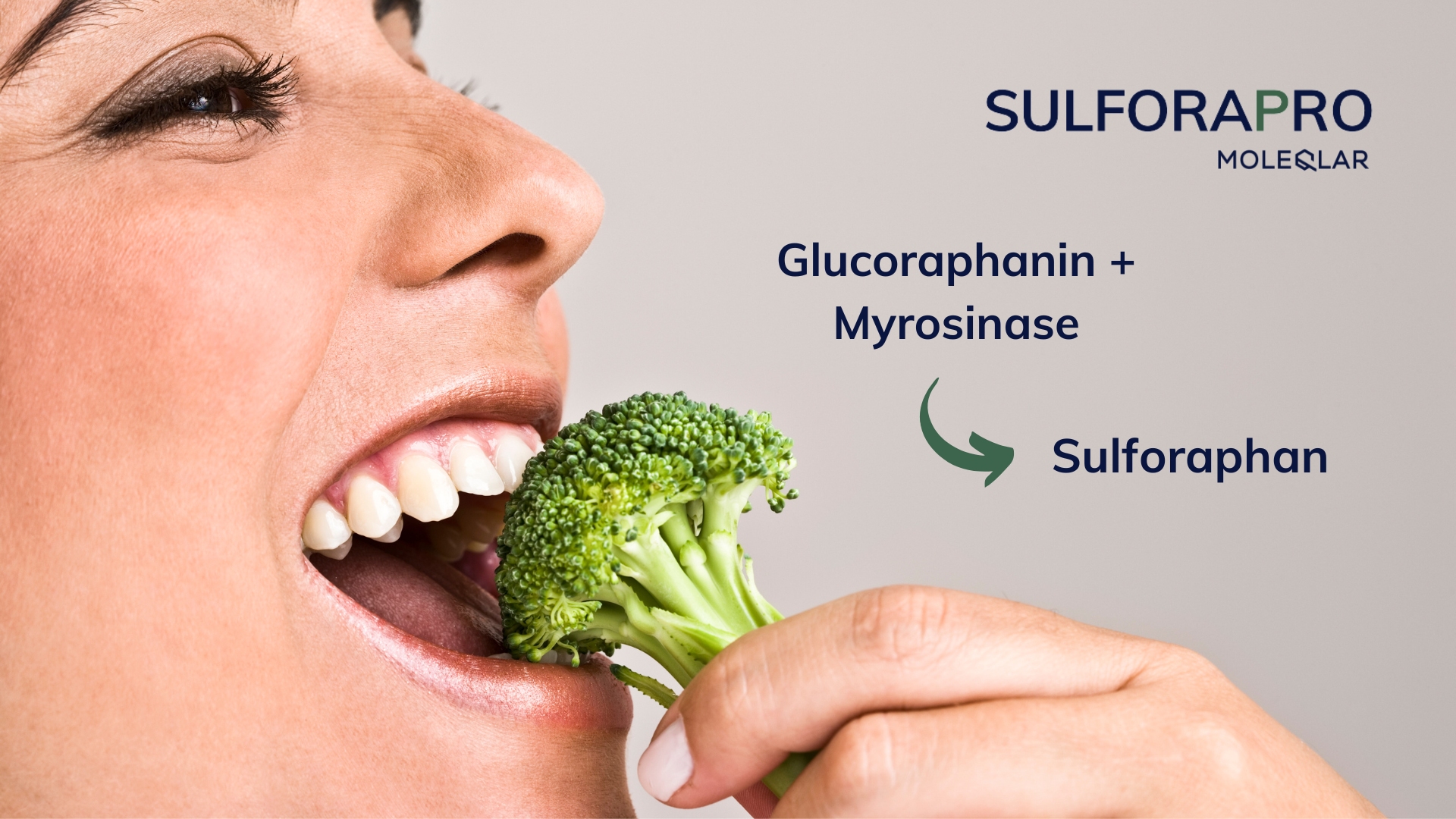
What foods contain sulforaphane?
As mentioned above, sulforaphane is mainly found in cruciferous vegetables such as broccoli, Brussels sprouts and cabbage. Other vegetables such as radishes, arugula and mustard greens also contain sulforaphane, albeit in smaller amounts. It is important to note that not all broccoli varieties are the same when it comes to sulforaphane. Some broccoli varieties contain more glucoraphanin than others, which means they may also produce more sulforaphane. In general, however, all broccoli varieties contain a small amount of the important molecule to provide health benefits. A 100-gram serving of cooked broccoli can contain up to 1.6 milligrams of sulforaphane. Cauliflower also contains a significant amount of the vital substance.
In addition to vegetables, sprouts, such as broccoli sprouts, also contain a high concentration of sulforaphane. A study showed that broccoli sprouts can contain up to 100 times more sulforaphane compared to adult broccoli plants. In MoleQlar's Sulforapro Complex, glucoraphanin and myrosinase meet the finest broccoli extract!
How does sulforaphane work in the body?
Sulforaphane stimulates molecular mechanisms in cells via certain transcription factors that have a geroprotective effect. "Geroprotectors" protect us from the aging process. Sulforaphane belongs to this very group. We are also happy to explain exactly what the molecule does in the body: namely, it activates the so-called Nrf2 signaling pathway (English for: Nuclear factor erythroid 2-related factor 2). A long word, but it is relatively easy to describe what this signaling pathway is responsible for in the body.
What is the Nrf2 signaling pathway?
Nrf2 is a transcription factor that plays a key role in regulating the expression of genes involved in detoxifying harmful substances and combating oxidative stress. When sulforaphane is taken into the body, it activates this signaling pathway by interacting with certain proteins in cells and stimulating their release from the cytoplasm (cell water) into the nucleus.
The Nrf2 signaling pathway has a number of positive effects on health. Firstly, it protects cells from oxidative stress, which is caused by free radicals and can lead to cell damage, inflammation and disease. Secondly, it helps to detoxify harmful substances that may be present in the body. Activation of the Nrf2 signaling pathway therefore activates various protective mechanisms in the body. Sounds good? Okay. But what is the best way to take sulforaphane now?
Why take sulforaphane in capsule form?
Although the best sources of sulforaphane are cruciferous vegetables, it can be difficult to obtain sufficient amounts of the bioactive molecule from food alone. The absorption of sulforaphane is more complex than it appears at first glance. Sulforaphane in its pure form is very unstable and usually does not reach our body or is already destroyed on its way into the intestine. The combination of glucoraphanin and myrosinase mimics the natural formation of activated sulforaphane in our digestive tract. To prevent stomach acid from attacking the molecular structures, the capsule is coated with an enteric coating. Only in this way can the highly pure and bioactive vital substance fully develop its effect in the body. Our Sulforapro is an innovative molecular complex of the sulforaphane precursor glucoraphanin and its activator enzyme myrosinase, combined with natural broccoli extract .
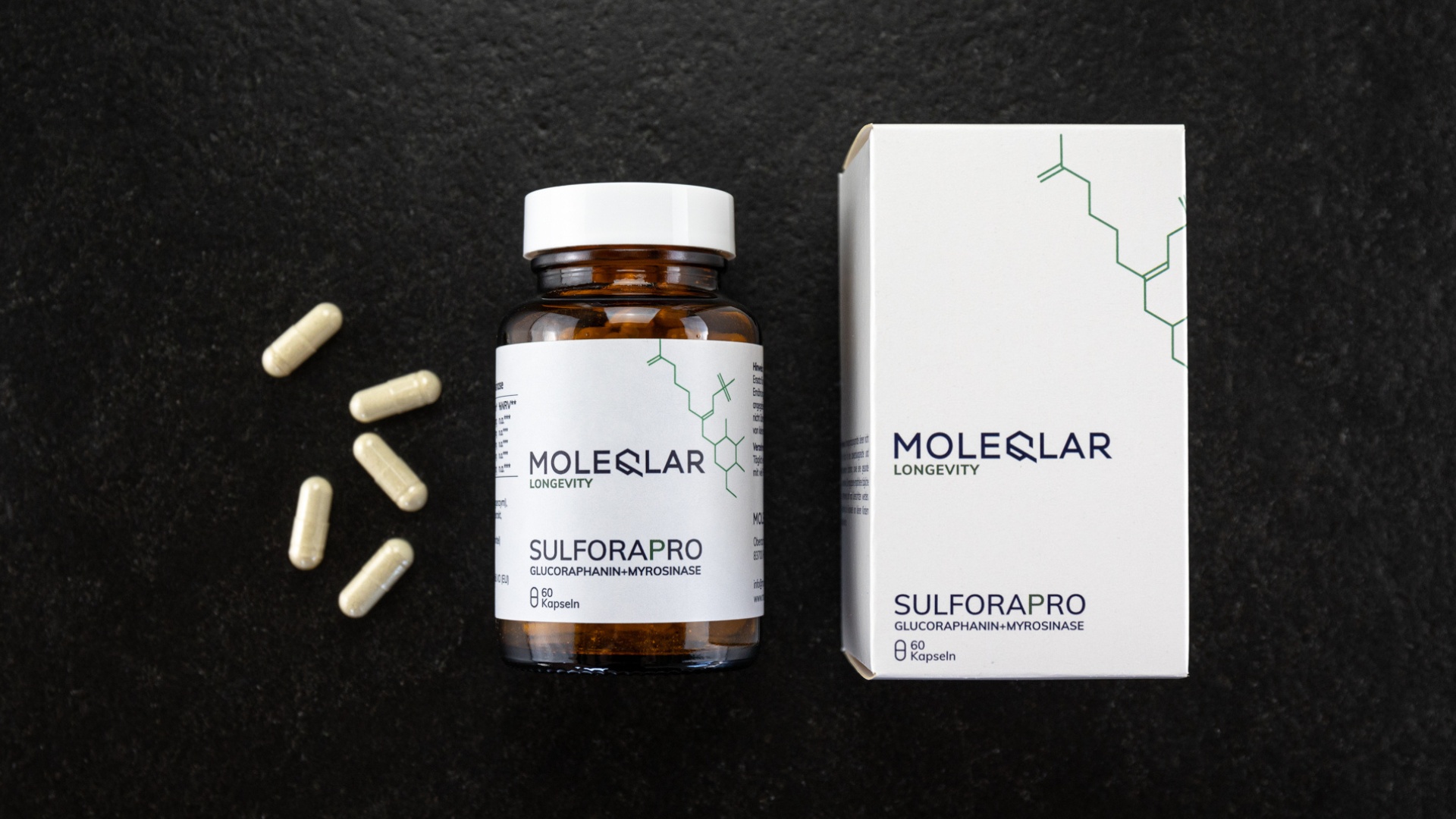
Conclusion
To summarize, sulforaphane as a dietary supplement could be a promising means of promoting longevity. Sulforaphane has been shown to have antioxidant and anti-inflammatory properties. A preparation containing the precursors glucoraphanin and myrosinase is best suited. These are important components that play a role in the production of the molecule. As it can be difficult to obtain sufficient amounts of glucoraphanin and myrosinase through diet alone, supplements are a convenient and effective way of ensuring that the body absorbs sufficient amounts of the vital substance.
Literature
- Kaiser AE, Baniasadi M, Giansiracusa D, Giansiracusa M, Garcia M, Fryda Z, Wong TL, Bishayee A. Sulforaphane: A broccoli bioactive phytocompound with cancer preventive potential. Cancers (Basel). 2021 Sep 25;13(19):4796. doi: 10.3390/cancers13194796. PMID: 34638282; PMCID: PMC8508555.
- Petkovic M, Leal EC, Alves I, Bose C, Palade PT, Singh P, Awasthi S, Børsheim E, Dalgaard LT, Singh SP, Carvalho E. Dietary supplementation with sulforaphane ameliorates skin aging through activation of the Keap1-Nrf2 pathway. J Nutr Biochem. 2021 Dec;98:108817. doi: 10.1016/j.jnutbio.2021.108817. epub 2021 Jul 14. PMID: 34271100.
- Yagishita Y, Fahey JW, Dinkova-Kostova AT, Kensler TW. Broccoli or sulforaphane: Is It the Source or Dose That Matters? 2019 Oct 6;24(19):3593. doi: 10.3390/molecules24193593. PMID: 31590459; PMCID: PMC6804255.
- Houghton CA. Sulforaphane: Its "Coming of Age" as a Clinically Relevant Nutraceutical in the Prevention and Treatment of Chronic Disease. Oxide Med Cell Longev. 2019 Oct 14;2019:2716870. doi: 10.1155/2019/2716870. PMID: 31737167; PMCID: PMC6815645.
- Tříska J, Balík J, Houška M, Novotná P, Magner M, Vrchotová N, Híc P, Jílek L, Thorová K, Šnurkovič P, Soural I. Factors Influencing Sulforaphane Content in Broccoli Sprouts and Subsequent Sulforaphane Extraction. 2021 Aug 19;10(8):1927. doi: 10.3390/foods10081927. PMID: 34441704; PMCID: PMC8394606.
Graphics
The images were purchased under licence from Canva.
